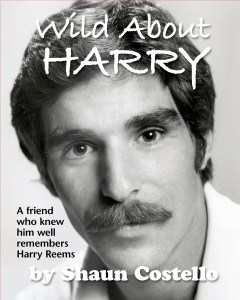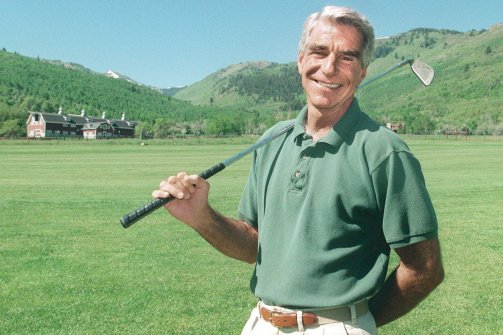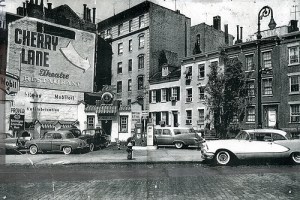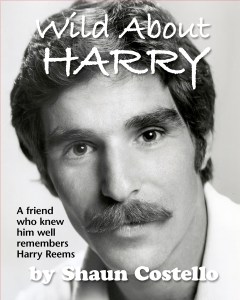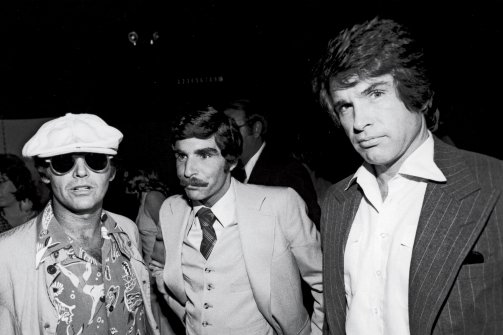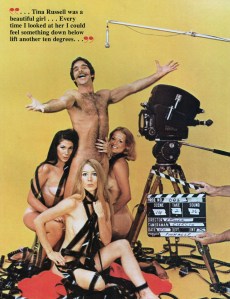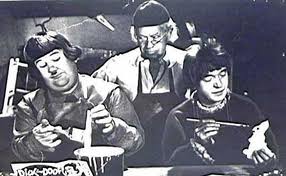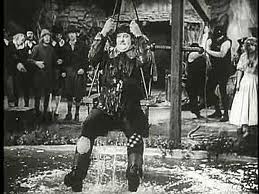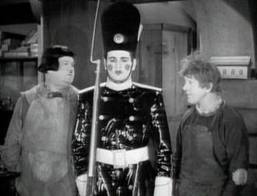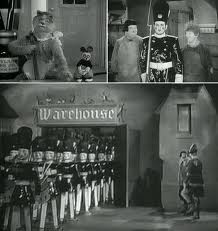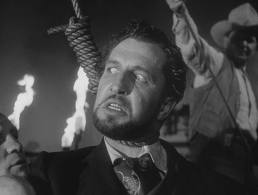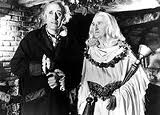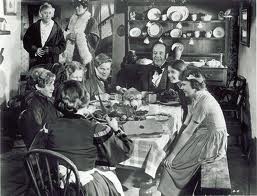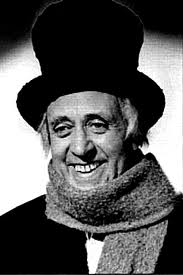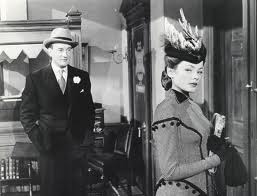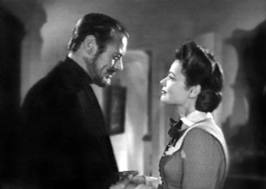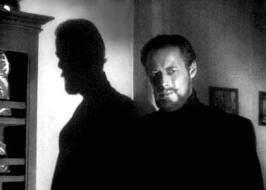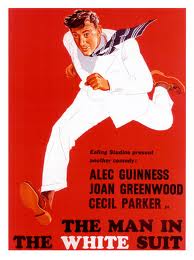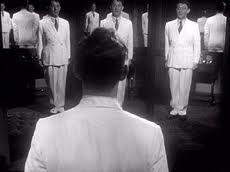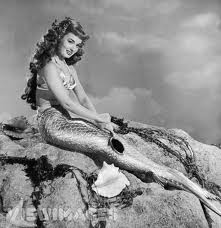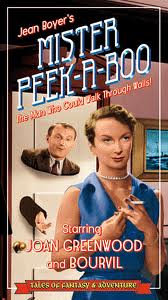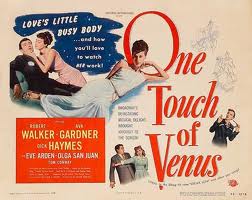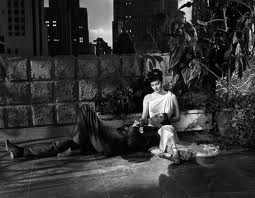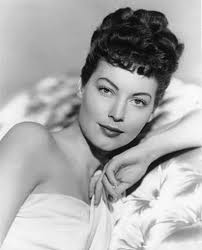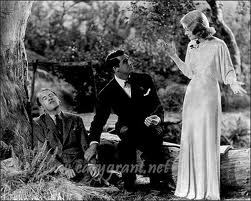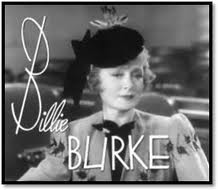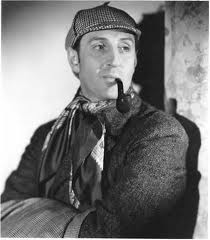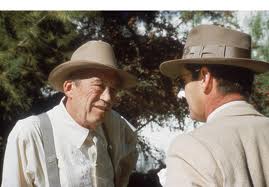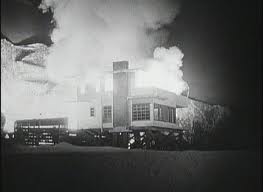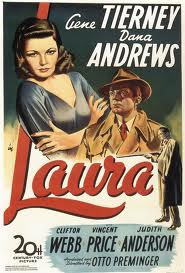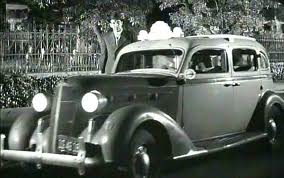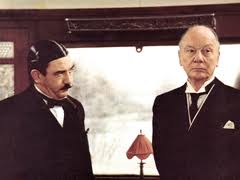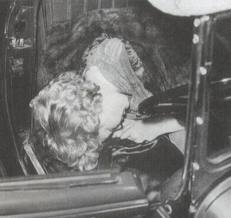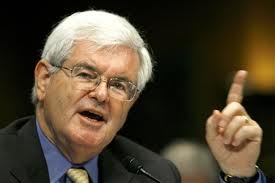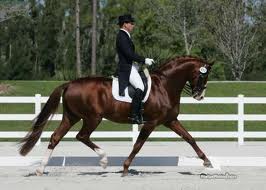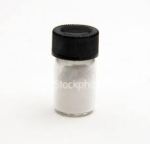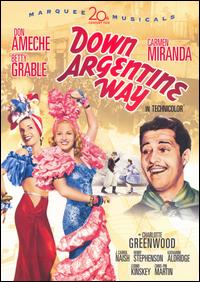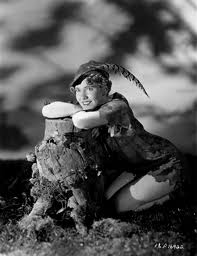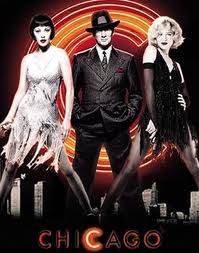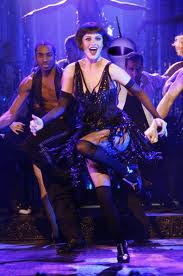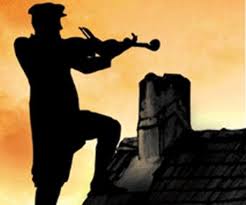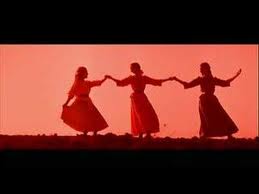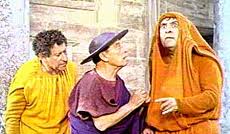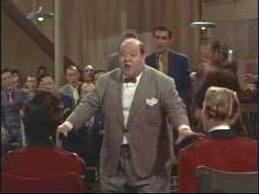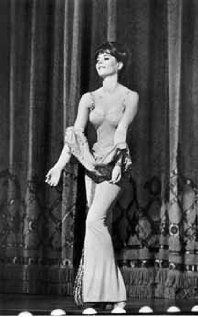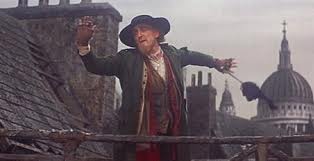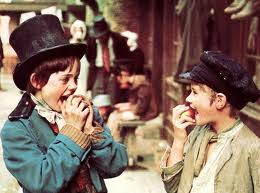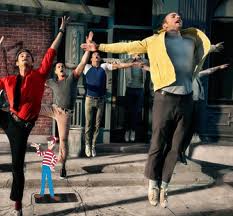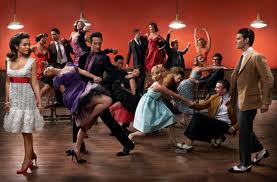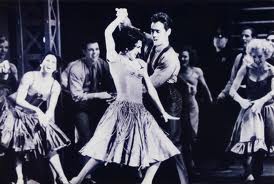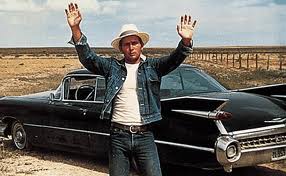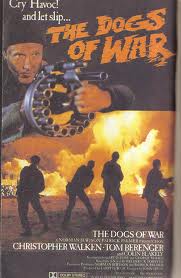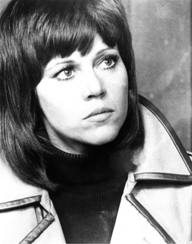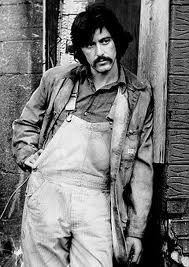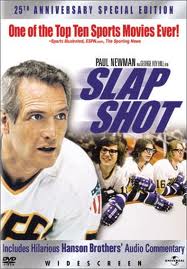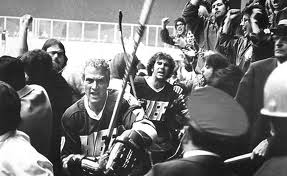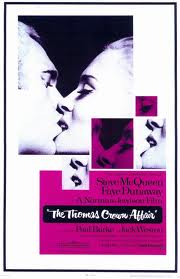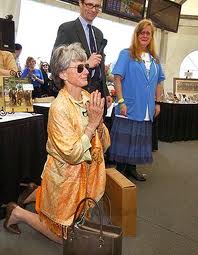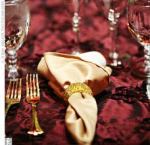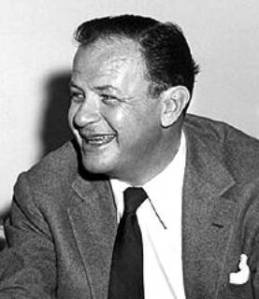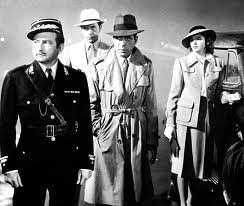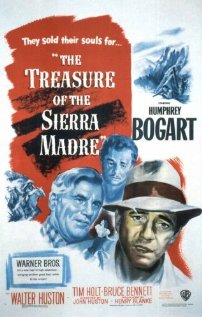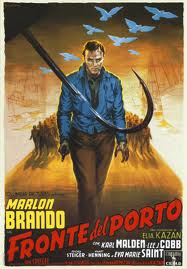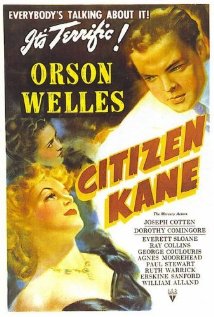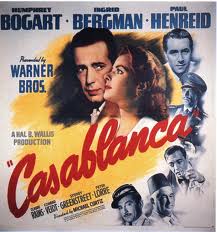NOCTURNAL NONSENSE
NOCTURNAL NONSENSE
by
Shaun Costello
I was awakened about 3AM by the light. The kitchen lights were on. Had I left them on before going to sleep? I got up to reconnoiter. The office lights were on as well, and the computer. What the fuck? I could never have gone to bed with everything on, but I was too tired to care. I turned everything off and went back to sleep.
Jazzbo begins his morning assault on my blissful unconsciousness at approximately 5AM. He begins with subtle murmurs, and gradually steps up the decibel level and physicality of his attack, until a few minutes before six when, while sitting squarely on my chest, the biting begins. He knows this is effective because it works every morning. I sit up on the edge of the bed and, after a series of head butts on my legs, we settle in to some head scratching, back petting, and tail stroking. OK, I’m up now. I turn on the light, grope for my flip flops, and mosey toward the kitchen, with Jazzbo weaving between my legs at every step.
The routine is always the same. I turn on the lights in the office, then the computer. Next is the kitchen, and making coffee – but wait…..not this morning. Something’s wrong. On the counter, next to the coffee maker is my cup – the one I use every morning. There’s coffee residue on the bottom. It’s been used. The coffee maker is filled with cold coffee. I always wash it after it’s done its work. And Jazzbo’s milk snack bowl is on the counter with some milk still sitting on the bottom. What is happening? Then it dawns on me. The lights at 3AM. At some point in the middle of the night I must have awakened, thinking it was 6AM. It’s just as dark here at six as at three. And I began my morning routine of turning on the lights, the computer, and the coffee maker. I even drank a cup of coffee. And I gave Jazzbo his milk snack. I have no memory whatsoever of doing any of this. Was I sleep walking? Did I have a psychotic episode? Is this early Alzheimers? I have no idea what triggered this event, or any recollection of Jazzbo’s participation. He was probably too freaked out by my sleep walking to join in.
Here’s what normally happens:
After I’ve poured the water into the coffee maker, Jazzbo attacks the empty sink, lapping up what water he can find. This is disgusting, and I tell him so every morning, but he’s a creature of habit, and his sink fun is an integral part of his early routine. Next, I measure some coffee into the machine, and turn it on. Then the geezer pills – five of them. Jazzbo helps by trying to head butt the pill container out of my hands and onto the floor. He’s sometimes successful, sometimes not. Next, the ‘Where is it’ game begins; and Jazzbo, knowing what come next, becomes agitated, and begins pacing back and forth on the counter. I take the container of cat treats out of the cabinet, and head toward the bedroom. Halfway there I begin the shake the little bag and I hear ka thump – ka thump, as Jazzbo descends from the counter to the floor by way of a small table I placed there for his convenience. (After all, he’s twelve) I sit down in a chair and count out four treats. These are given to him individually, accompanied by embarrassing ‘yum yum’ sounds. Then I count out six more, which I place in front of him on the floor.
While Jazzbo’s gobbling up his treats and the coffee maker is finishing its work, I walk to the office to check email. I then click on the New York Times’ web site, and head back to the kitchen for my first cup. Jazzbo’s already sitting on the counter, waiting anxiously for his milk snack. I pour myself a cup, and take the milk container out of the fridge. Jazzbo becomes highly agitated, attempting to knock the container out of my hands. I take his bowl out of the cabinet and pour him some. Then off to the office to read all the news that fits.
This has been our morning routine for many years. But I guess it’s all different now, given that I have obviously lost my mind and become a rabid sleep frolicker. Maybe we have a poltergeist. No, that would be too easy. I’m just nuts now. That must be it. Why did this happen? I’m open to any suggestions. Something must have caused this to happen, but what? Could I be suffering from Trump Anxiety? Maybe I’m not alone. Could America become so Trumpatized that we are turning into a nation of sleep walkers? Maybe, tomorrow morning, after I succumb to Jazzbo’s early morning assault, I will awaken to find that it’s all been a dream. That Hillary had won be a large margin and that all was well and good in the world. Or would that be too easy?
*
© 2017 Shaun Costello
THE BOOK IS FINISHED
Le Journal d’un Pornographe Unrepentant
Par Shaun Costello
The finished manuscript. Just over ninety thousand words. It took me ten years to complete this book. I gave up many times along the way, stunned by the universal rejection I had received. Then, a year or so later, I would start again, find another agent willing to take it on, and get hammered with rejection once again. I don’t take rejection well. But now, thanks to a French publisher, it’s finally finished. A hard cover edition will be available, in French, in October 2016, at book stores in France, Belgium, Luxembourg, Switzerland and Canada. Thank you to all of my friends who kept after me to finish it: Gil Markle, Thomas Eikrem, Andy Waller, Jeff Eagle, Robin Bougie, Mike Forhan, Mary Jo Rayfield, Elizabeth Main, and many others. If I have forgotten you, go out and buy a gun and shoot me. Thanks to Congress, you won’t need a background check.
DONATE ANY AMOUNT THROUGH PAYPAL
shaun.costello@gmail.com
LULA AND CHRISTY GO TO TAMPA – An Uber Adventure

LULA AND CHRISTY GO TO TAMPA
An Uber Adventure
By Shaun Costello
Friday afternoon began without any surprises. I headed for my car carrying a bag of garbage to take to the community compactor, and a grocery list for the day’s shopping. When I got behind the wheel, I tapped the Uber App on my smart phone, which would connect me, through the GPS system, with Uber’s network. I had been driving an Uber cab for about two weeks, and was anxious to get some trips because last week I had gotten no fares at all. After dropping off the trash, I got back in my car to the sound of Uber’s trip signal. On the phone’s screen a circle was flashing on the GPS map, and my little Samsung Galaxy was beeping its heart out. A trip – just what I needed. Normally, the screen on the Uber App would provide the address and name of the passenger, the destination and the distance. But my screen was too dark to see any detail in daylight. Uber’s software was not yet fully engaged. So I let the voice on Uber’s navigation system guide me to my passenger. The Uber software is pretty glitchy, and seldom works as advertised, and Uber’s tech support is defensive and relatively unhelpful. As an Uber driver you’re pretty much on your own to wrangle your way through Uber’s software jungle, and somehow make it work.
The navigator’s voice guided me over the Peace River Bridge to downtown Punta Gorda, and a few quick turns took me to the front of one of the town’s waterfront hotels. I parked under the hotel’s portico and waited. No one approached the car, and the navigator’s voice kept squawking about another left turn and one hundred feet to the destination. I slowly made my way around the parking lot, and, sure enough, there was a second entrance. As I came to a stop, my phone’s screen lit up and told me I had arrived, but there was still no passenger’s name or destination provided. Not that I cared. I had a fare, and like Travis Bickle, I was prepared to take them wherever they wanted to go.
There was a substantial pile of luggage outside the door to the hotel. Four large hard bags, with handles and wheels, and several smaller bags, including several plastic shopping bags which were overflowing with contents. Standing behind the pile of luggage were two thin women, I would guess to be in their mid-forties, puffing on cigarettes and intensly babbling at each other. I got out of my car and asked them if they had ordered an Uber cab. The luggage might mean an airport run, which meant fifty bucks in my pocket, so I’m sure I had a smile on my face. At first they were a bit baffled by the car and the luggage, and how to fit all this into my little Honda Civic, and they shuffled their feet a bit, and puffed on their cigarettes. As we began to stuff my little trunk with their baggage, I asked if they were headed to the Airport. ‘No honey”, said the taller of the two in a seriously southern accent , “We’re goin’ to Tampa. A long trip today, sugar.” Tampa – that was over a hundred miles north, good news for this eager Uber driver.
After packing my little Honda’s trunk to its absolute limit, and the girls agreeing without complaint, to not smoke in my car, they crammed themselves and their overflowing shopping bags into the back seat, as I wiped the Uber App’s ‘Begin the Trip” bar to officially start the journey. They would introduce themselves as Lula and Christy. Two southern babes who had found themselves abandoned in Punta Gorda, Florida.
As we made our way toward I75 for the trip north to Tampa, they began to tell me their story, which, of course, was obvious from the get go. Lula, the taller and older of the two was from Memphis, and young Christy was from Biloxi Mississippi. Lula said she used Uber cabs all the time because she traveled so much, but she was vague about the nature of her travels. Christy seemed to be along for the ride. It seems they met this guy, which is, of course, how all stories like this one begin. They met him in an airport, although it was difficult from their babbling to understand where exactly, in the terminal cocktail lounge, waiting for a flight to Orlando. The guy bought them drinks, and after a while, began to persuade them to skip Orlando and come with him to Punta Gorda. “Orlando’s for losers”, he told them. “Come with me. My car’s in the lot at the Fort Myers airport. We’ll fly there and I’ll drive you to Punta Gorda.” He told them he would put them up in the best hotel in town and rent them a car. They would have the time of their lives. He would pay for everything. After several drinks, their Punta Gorda adventure began sounding more and more appealing. So, they changed their flight, and joined their new and generous friend on his journey to Fort Myers.
The whole business began to unravel as they checked in to the hotel in Punta Gorda. It seems that their new friend’s credit cards were maxed out. He told them that it was no problem. He had other cards at home and he would bring them over in the morning to pay for their room and take care of that rental car he had promised them. Although they were not specific about what took place in their hotel room that night, I think it’s safe to assume that a menage et troix of some kind was the order of the evening. They awoke with hangovers, their new friend long gone, having made his escape during the night. When they attempted to call him they found that his cell phone was out of order. He had never mentioned his last name. They had no way to find him. So, here they were – a couple of southern babes with serious hangovers, out two hundred bucks for the hotel room, in a strange little town about a million miles from nowhere. Lula had been to Tampa several times and liked it. She told her hungover companion that they would go to a waterfront hotel she knew in Tampa, and just try to forget the whole unpleasant episode. How would they get there? Lula had an Uber account.
Enter yours truly, dear reader, now on I75, headed north with a packed car, and two hungover and frisky women, who had decided to forget their misfortune and seize the day. We had barely put ten miles on the odometer before two fleshy objects revealed themselves on the arm rest between the two front seats – Two bare feet, containing ten toes, and two toe rings. Lula, who was sitting behind me, had placed her right foot on the arm rest, along with Christy’s left. I have to admit that they were attractive feet, and to thinking that this was the most promising Friday I had spent in a while. After a moment or two of silent anticipation, Lula pleasantly demanded to know which of the two feet were sexier. Was I being tested? Seduced? What exactly was happening here?
“C’mon now, honey. Who’s got better feet? You know you’re gonna like one more than the other. I think mine are pretty sexy, but if you like Christy’s, I’m OK with that. C’mon honey, you pick ‘em.”
The ten toes seemed engaged in some kind of choreographed wiggle routine, perhaps to help me decide. Was there a candid camera hidden somewhere in their luggage? All I knew is that I was up a hundred bucks for the long distance Uber trip, and presently engaged in an outrageous flirtation with two whacky women who had been abandoned in my neighborhood. I tried, of course to be “Solomon-like” in making any comparison. I told the girls that each foot had a different shape and that both were attractive in different ways. I said that I found both feet to be appealing, and that, if I came upon either of them in the course of an evening’s activities, that I would certainly create an inventive and satisfying use for them. Silence now. No response from the girls until I heard Christy telling Lula no to Patty Cakes.
“I don’t want to play Patty cakes.”
“C’mon now Christy honey, you know you want to.”
“No I don’t. No Patty cakes”
“Yesterday you played. You said you loved playing Patty Cakes.”
“No, I don’t want to. You can’t make me.”
“Suit yourself, Chisty honey, but you know you want to.”
During the Patty Cake exchange, the two bare feet disappeared from comparative consideration, my carefully crafted comparison evidently ignored. But the inquisition continued. Inquiring minds wanted to know.
It was Christy this time. “What do you think makes me horny, honey?”
The acoustics in my Honda favored road noise over back seat dialogue, so Chisty’s question seemed muffled, and my response was idiotic. “Christy, you want to know what I think makes you a horny honey?”
“No, no, no….You’re the honey – I’m just horny. I asked you, ‘What do you think makes me horny, honey?’ So, what do you think? C’mon now, guess.”
Were they just messing with me? I wasn’t sure. This was now far outside my very limited Uber experience..
“Christy, I don’t know you well enough to know what makes you horny. I know that you have an attractive left foot, and that some guy played some havoc with you both. That’s about all I know.”
“Drinkin’”
“I’m sorry?”
“Drinkin’. Drinkin’ makes me horny as hell. The more I drink the hornier I get. You like drinkin’?”
“Sure, I mean, I guess.”
“I bet I could drink you under the table.”
“I’m sure you could, Christy. At my age, I don’t really do much high-volume drinking anymore. I’m too old for that kind of thing.”
“Nonsense. You’re not old at all. Younger men are stupid. I can’t tolerate ‘em. I like older men. Wisdom comes with age, don’t you know that? Hey, what sign are you, anyway?”
This conversation peaked with the foot comparisons, and had gone steadily downhill since the introduction of the Patty Cakes. “Capricorn, Christy. I’m a Capricorn.”
“Capricorn. That’s the goat. I like that. You know, I’ve learned a lot from hangin’ with older men. Older guys know stuff. Older guys have taught me everything I know about sex. And I know a shit-load about sex, I’ll tell you. A mega shit-load. “
Lula chimed in. “She sure does. Knows everything there is to know. Christy’s a fuckin’ encyclopedia, pardon my French, in the sex department.”
Was there a hidden microphone recording all of this? Adjectivally speaking, ‘hoodwinked’ would best describe how I felt at this moment. This couldn’t really be happening, could it? We were approaching the Sunshine Bridge on I75 and there was a scenic rest stop on the water, so I exited the highway, and pulled into the parking lot. I told the girls I was giving them a bathroom and cigarette break, and they squealed with delight. They needed the trunk opened so that they could rearrange some of their luggage, and for the next half hour, all of their bags were taken out of the trunk, and emptied on the pavement. They seemed to be taking the contents of each bag and placing it in the bag next to it, which had been emptied for this purpose, the contents now spread all over the ground. They sat in the midst of this mini-mountain of their possessions, babbling incomprehensibly, and passing cell phones back and forth. Christy had two, and Lula three, and they began to send text messages to unsuspecting recipients. The babbling had stopped now, and their thumbs were ablaze, texting away – using all five cell phones at once – passing them back and forth in an orgy of tele-communication.
If I were a normal taxi driver, I think I would be concerned at this point. Had these two escaped from psychiatric incarceration somewhere? Did they really have the money to pay for this very expensive ride? But with Uber, the minute a customer requests a ride, a hold is put on their credit card for the approximate amount of the fare. There was no way that I was not getting paid for this adventure. But this was time consuming, and I had to crack the whip. I told them that if a state trooper came by, we might get a ticket for littering, and to please get all of this stuff back in the trunk. They reacted surprisingly well, like naughty children who knew they had overreached, and began to fill the trunk with their newly rearranged possessions. We had now been in this parking lot for an hour, and neither Lula nor Christy had peed or had a cigarette. It was time to do both and get on with the trip.
I took advantage of the girls’ bathroom visit by activating the navigation system on the Uber App, which immediately lit up and started squawking directions. I now knew that I was getting paid for this bizarre endeavor, and I had directions to our destination, which made me feel better, since the girls were vague about knowing how to get where they were going. As we began to ascend the towering Sunshine Bridge, Christy spoke up mournfully, “When my Mama drew her last breath, a tear trickled down her cheek, like to break my heart right then and there.” Well, this was certainly a conversational game changer. Not to be outdone in the ‘last breath’ department, Lula answered, “When my Gramma drew her last breath, it was so soft you could barely hear it, I loved my Gramma.” Without skipping a beat, Christy responded, “When my Papa drew his last breath, it sounded like the last note in a sad song.”
Lula was now fully engaged. “When my Uncle Abner drew his last breath, it was as crackly as could be. Sounded like a chain saw.”
“Last breaths can’t be crackly, Lula. The good Lord made last breaths to be soft and soothing, like angel’s feathers.”
“You never met Uncle Abner. Every time that man opened his mouth it sounded like a chain saw. Like to drive Aunt Esther to drink. Not that she needed much help.”
The ‘last breath’ competition continued for a few more minutes, before the girls remembered that I was in the car. At least Christy remembered.
“Hey there, you don’t have to go back tonight , do you? I got plans for you, mister. I’m gonna drink you under the table. Hey, you’re not married or nothin’, are you?”
I told Christy I was divorced and she squealed, “Eeeeeeehaaaa…..I bet you’re not as innocent as you look. I bet you’re a guy who’s constantly on the prowl, lookin’ to meet up with someone just like me. Aint that true? C’mon, fess up, you’re a horny bugger, aint you? I’m gonna drink your cute little ass right under that table. Then we’ll see what’s what. I don’t take no for an answer, do I, Lula?”
“Nope, she sure don’t. You’ll be stayin’ with us tonight. We’ll get a room, and when the fun starts, the sky’s the limit.”
For purpose of disclosure, I have to admit to being both amused and tempted when those two feet suddenly and playfully appeared on the arm rest. But now, that seemed so long ago. I did not feel that these girls put me in danger in any way, but we were now three and a half hours into this trip, with at least another half hour to our destination, and there was the return trip to consider. Spending the night in a hotel room with Lula and Christy was not on my bucket list. I did not say no, however. I thought it prudent to play them along, and wait for the right moment to make a graceful exit.
We were now in bumper to bumper rush hour traffic, and the navigation system’s voice was giving me different directions than Lula, who had told me she had stayed in this hotel several times. She said that she might have given Uber the wrong street address. Uber’s navigation system was extremely precise, and if she address had been off by a single digit in the street number, the directions to the address would differ substantially. Lula had said turn right when Uber said left, and since she had been there before I followed Lula. We made a few more turns until we would up in a parking lot a few hundred yards from the hotel. Lula said to stop here. That someone was meeting them here, and they would decide on where to stay when he arrived. This was a new wrinkle in their story. Someone was meeting them. The Uber App was telling me that we were 300 feet from our destination, and until that destination was reached, the trip could not be concluded, which meant of course, that I would not be paid. I had to get these girls out of my car, and their ton of luggage out of my trunk as gently as possible, and drive that 300 feet.
Lula and Christy were now sitting on the pavement next to my car, all five cell phones actively engaged in another texting orgy. I mentioned to Lula that she should call her friend rather than texting him, since he was obviously on his way, and driving a car. Christy responded that Lula didn’t talk on phones, she only texted. My Samsung kept squawking about the 300 feet to the destination, and I tried, as gently as possible, to explain that if my car did not travel the 300 feet, that Uber would not pay me. They responded well to this information, and began removing bags from the trunk, while continuing to text to God only knows whom. But as the bags were placed on the pavement, their contents began being switched, just as they had at the rest stop. Distracted by their texting, the girls were removing half the contents of the bags, leaving the stuff strewn all over the pavement. This is where Lula had said that her friend was meeting them – right here in this parking lot.
Just as they had done at the rest stop, Lula and Christy were now sitting in the midst of a mountain of clothes, various and sundry bathroom items, and odd electronic devices, texting away on all five cell phones. I announced that I was going to drive that final three hundred feet to complete the trip, so that I would be paid. They grunted a vague acknowledgement, but pretty much ignored me. So that’s where I left them, in the middle of a now-trashed parking lot, sitting on the pavement in the midst of all their worldly possessions, texting their hearts out, seemingly unaware of my leaving, or of anything else for that matter. As I got back in my car, they didn’t look up. I watched them in the rear view mirror as I drove away, hoping that they might wave, but they were in another world entirely, and quite oblivious to mine.
By the time I reached home, eight hours had elapsed since my smart phone lit up with the Tampa trip. As a purely business venture I consider these eight hours to be badly invested. The hundred and twenty miles to Tampa was a paid trip, but the hundred and twenty mile return was not. Two hundred and forty miles on my car, a lot of gas, and eight hours of my life that I’ll never get back. But everything you do in life is not measured in dollars and cents. I will be paid $99. for the trip, which is hardly enough. But the eight hours I spent in the deliciously insane company of Lula and Christy will linger in my psyche for quite some time. Was anything they told me true? I really can’t say. Were they simply toying with me? I just don’t know. But those wiggling toes, the “Last Breath” stories, “I’m gonna drink you under the table”, “C’mon, fess up – you’re a horny bugger, aint you? “The sky’s the limit.” The texting orgies. These are moments I won’t soon forget.
And where do you suppose they are now? Did their friend ever show up? Are they still sitting in that parking lot? Did some wayward cop cite them for littering, or even vagrancy? Are they attempting to explain themselves to the psychiatrist assigned to their case? Who knows. I like to think that girls like Lula and Christy just keep on keepin’ on. That, even in the midst of their apparent confusion and seemingly irrational behavior, they somehow triumph. That there will always be some guy who has a scheme that isn’t true, who will persuade them to change their plans, and follow him to paradise. That they will wind up abandoned once again in a strange hotel that they were forced to pay for. And that they will need to leave that strange hotel, and go somewhere familiar to recuperate and regroup. And how will they get there? Well, after all, Lula has an Uber Account.
*
© 2016 Shaun Costello
DONATE ANY AMOUNT THROUGH PAYPAL
shaun.costello@gmail.com
WILD ABOUT HARRY…..The first reviews are in!

WILD ABOUT HARRY
A friend who knew him well remembers HARRY REEMS
by Shaun Costello
The reviews are coming in:
*
*
*
^
*
*
*
“A Touching Tribute by One Adult Industry Legend to Another”
By Geert Claeys on June 7, 2015
Format: Kindle Edition
My earliest memory of Golden Age hardcore he-man Harry Reems stems from somewhere back in the still budding Eighties. Our (Belgian) household was still a few years removed from acquiring its first VCR, mighty pricey back in the day, but the local video store would offer cumbersome play-only devices described as “movie boxes” (anyone else remember those contraptions ?) for an affordable weekend rental, throwing in a couple of complimentary tapes as part of the deal. As with any VHS renter, one of the flicks I picked was of an adult nature, in my case the 1974 carnal classic
Sometime Sweet Susan. So it came to pass that my mom (!!!) and I – aged about 15 or 16 at the time – sat down on a Saturday night to sample our first flavor of in-house intimate entertainment. Mom, God rest her weary soul, was a desperate housewife well before TV made the term fashionable, possessed of a tiger’s temperament trapped in the starting to sag shell of a stay at home spouse and mother of eleven, eight sons versus three daughters. The bloom of youth prematurely trampled by daily drudgery, Lord knows she could stand a salacious vicarious thrill to help her make it through the night. Turned out titular Susan, the pic’s perky protagonist, was a particularly troubled young lady with a split personality (the proverbial good girl/bad girl) in dire need of psychiatric support. Enter Harry Reems as the Good Doctor (I didn’t see Deep Throat until several years after) rushing in aid of our ailing heroine. I swear you could have heard both mom and me gasp at his first appearance. Although an amiable actor, certainly by adult standards (a frame of reference I was still unfamiliar with at the time), it was his look that did it for us. Yes, we really were that shallow ! A fine torso with magnificent muscle definition, yet light years removed from the pumped physique of the next decade’s gym bunnies, covered with a thick layer of fur as our favorite tell-tale trademark of virility. Mom liked ‘em hirsute and, then still unbeknownst to her, so did the youngest of her boys… The Sixties’ sexual
revolution had produced an unprecedented permissiveness on worldwide cinema screens by the time strapping young Herbert Streicher, a nice Jewish kid from Brooklyn, figured these newfangled fornication flicks were a great way to make ends meet while waiting for his big break in thespian territory. The ultimately short-lived “Porno Chic” phenomenon took sex films out of their storefront ghetto and moved them into fancy first run theaters. For a brief shining moment, it seemed as if carnal cinema had come of age and had permanently taken up residence in the major league to the approval of adventurous audiences everywhere. In such climate, illusory though it was to prove, it was not unthinkable for a struggling actor to seriously consider the option of taking it off and putting it in for pictorial posterity without a care as to how or whether this might affect his future chances. After all, he wasn’t doing anything that didn’t come naturally to most people. At worst, should fornication films prove but a fleeting fad, they would probably sink without a trace leaving no one the wiser, right ? Unfortunately for Herb, who had been trying on professional monikers with “Tim Long” the most persistent until “Harry Reems” finally stuck, an unassuming little XXX flick was to decide otherwise… Gerard Damiano’s groundbreaking Deep Throat and its legal hassles that were to kill off the legit careers of all involved, headed by Reems serving as primary scapegoat, have been extensively covered by Bailey and Barbato’s essential 2005 documentary Inside Deep Throat. Shaun Costello, a fellow performer from the industry’s infancy who would graduate to feature filmmaking while upholding an astonishing “Real World” front, was there at crucial junctures in Harry’s life. Now he lifts the veil on the man whose very image was to become synonymous with the prototypical Seventies porno stud : a lean mean fornicatin’ machine with the trademark

Jack Nicholson and Warren Beatty were the first two Hollywood celebrities to come to Harry’s aid. Fund raisers were held in New York and Hollywood for the Harry Reems Legal Defense Fund
handlebar mustache. A close buddy and ally since their days in the trenches, Costello chronologically charts the rise and fall of the reluctant adult industry icon in an instantly ingratiating, flab-free style giving you the how’s and why’s without resorting to amateur analysis or purple prose. Which is not to say that he merely records the bad boy shenanigans he shared with his subject, as evidenced by an astonishingly astute account of an acid trip that reads like something akin to Beat poetry. Carnal cognoscenti are well aware that Reems starred in Costello’s fledgling filmmaking effort, the sexually explicit Vietnam vet on a rampage flick Forced Entry, and the exhaustive chapter on that film’s genesis alone provides enough reason to pick up a copy of the book. Already associated with congenially comedic capers through Throat and other farces of its ilk taking their cues from burlesque theater, the actor gave one of his most atypical performances as the deeply disturbed gas station attendant whose twisted views on morality

“I’m Marlene Willoughby. Catchy name, huh? It’s not my real name, of course. I’m Polish. You probably couldn’t even pronounce it.”
(punishing women for making themselves sexually available to all and sundry) blow up in his face when the tables are turned in deliciously ironic fashion. Although Reems was to subsequently feign shock at the movie’s heady mix of real sex and phoney violence in his 1975 autobiography Here Comes Harry Reems !, it remains one of his standout achievements, providing a strong glimpse of what might have been had mainstream movies embraced rather than rebuffed him. Costello chronicles Reems’s fall from grace in harrowing detail, deftly side-stepping sensationalism at every turn. The actor’s own words quoted from various credited sources paper over the periods when the longtime pals’ paths would diverge. Their fleeting reunion towards decade’s end, when Costello was on his way up with bigger budgets allowing for more ambitious endeavors (the “Warren Evans” era, for those in the know) and Reems was fighting an ever escalating alcohol addiction in order to cope with the mounting frustration over his erotic entrapment, yields one of the book’s most poignant passages guaranteed to break a reader’s heart. Had the author ended right there and then, he would have wound up with one hell of a cautionary tale. Thankfully, life rarely comes as cut ’n dried as your average Movie of the Week would have it and Harry Reems ultimately did have a “life after porn”, finding both God and true love as well as widespread acceptance by his small town community in the unexpectedly enlightened State of Utah. Of all the lavish illustrations, mostly candid movie stills and eye-popping poster art, one stands out in particular. It’s a teeny tiny snap shot of Harry and his wife Jeannie Sterrett at the Inside Deep Throat premiere. Even the usually unsentimental Costello goes on record to concede that this apparently unassuming lady did nothing less than save his life. Moving back to where I started from, my mom never wished ill on anybody, not anybody who didn’t deserve it anyway, certainly no past or present object of her cinematic affection, secret sex fantasies or whatever the case may have been. Knowing her as well as I did, I’ve got a pretty good hunch she would have been tickled pink to learn that this lovely hunk o’man who stirred her loins many decades ago finally found happiness and got to lead a good life before his untimely passing at the age of 65. Makes me kinda happy as well, truth be told… Dries Vermeulen a/k/a the former (and future ?) Dirty Movie Devotee temporarily trapped in Limbo

DEEP THROAT became such a box office phenomenon that the Religious Right came out in force to demonstrate across the country
“Shaun Costello has written as beautiful a tribute as anyone could imagine. A fantastic evocation of a time, of a place and – most of all – of a friendship.”
by Julian Marsh on June 1, 2015
From The Erotic Film Society in London
For such a prolific director – at least 66 films between 1973 and 1984 – Shaun Costello remained one of the New York XXX scene’s best kept secrets for many years. One reason is the number of noms-de-porn he worked under. He made more than his fair share of films that are now recognized as classics but not always under the same name – he was ‘Kenneth Schwartz’ for FIONA ON FIRE but ‘Warren Evans’ for DRACULA EXOTICA, for example – and this prevented him from getting due recognition until relatively recently. For notorious roughies FORCED ENTRY and WATERPOWER, he was ‘Helmuth Richler’ but ‘Amanda Barton’ made the sensitive PASSIONS OF CAROL. At Avon Productions he was ‘Russ Carlson’ and for a while he was even ‘Oscar Tripe’; plus there were numerous uncredited one-day-wonders.
In ONLY THE BEST, published at the dawn of the video era, critic Jim Holliday indicated that one person was behind some of these pseudonyms; but pre-internet it was pretty much impossible for even dedicated pornologists to crack the Costello code.
With the advent of the web, the IMDb and IAFD and dedicated discussion forums where smut-hounds could compare what they’d discovered, facts began to surface.
Then something occurred that every film historian dreams about; Shaun Costello himself joined the forums. He posted on IMDb. He corrected. He clarified…
And suddenly his incredible career came into sharp focus. Not just those 66 films that he helmed but around the same number of appearances from 1971 to ’89 – and that doesn’t include loops – plus at least 50 films he produced and a similar number of writing credits. It’s a wonder he ever found time to sleep.
On the evidence of WILD ABOUT HARRY, his by turns hilarious and moving memoir about his friendship with Harry Reems, during the pre-DEEP THROAT days of Big Apple hard-core, sleep was often the last thing on his mind. Whether he was editing into the early hours – the only way he could afford post-production facilities – or heroically carousing with his buddies – ‘the Three Musketeers of 42nd Street’ – those years in the late 60s and early 70s seem to have been one madcap adventure, where anything was possible.
A voracious film fan, from art-house masters to grindhouse smut, Shaun absorbed everything. He fell into the pornographic loops business by happy accident, just as they were on the borderline of becoming legal, or at least tolerated, in the adult bookstores of the Deuce.
And he was there when a handsome, young, legit actor – still known by his birth name, Herb Streicher – made his debut in an explicit 8mm film destined for ‘under the counter’ sales.
(Assumed names were cast aside faster than underwear: Herb wouldn’t settle on Harry Reems for a couple of years, after he’d tried on ‘Tim Long’ among other aliases.)
It wasn’t just the start of a professional relationship – Shaun cast Herb/Harry as a disturbed Vietnam Vet in FORCED ENTRY, his first feature as director – it was the beginning of a deep friendship.
And now Shaun has published this memoir of those heady days – and that double entendre is very much intended – as a tribute to his buddy, who passed away in March of this year. Anyone who knows the recipe for Automat Soup (a container of ketchup and hot water, if you’re asking – gourmets break some gratis crackers on top to simulate croutons) will probably already have a copy.
But what if you’re not a dedicated devotee of the Deuce and are wondering whether to purchase? Or what if you – horror – have to ask, ‘What’s the Deuce’? Well, let Mr Costello explain…
‘The Times Square subway station, my portal to the neighborhood, was an intense assault on the senses. A sudden, almost overwhelming surge of smells and filth hit you as the train doors slid open to the rush of urine, and cotton candy, and damp humanity, and hot dogs on their revolving spits, and vomit, and baked goods like crumb cakes and bran muffins and pretzels, and the garlicky pungent scent of Gyros slowly rotating, and everything suddenly interrupted by someone chasing a pick-pocket through outstretched hands asking for dimes, and a tidal swarm of the disenfranchised huddled in groups, trying to stay warm. And this entire sensory phantasmagoria was musically scored by the overmodulated sound of Kool and the Gang wailing “Jungle Boogie” from the cheap speakers over the door to the subterranean record store. And then the cold again as you climbed the stairs to the street, and there it was, “The Deuce”.’ (from WILD ABOUT HARRY © 2015 Shaun Costello)
From this vivid evocation of arriving at 42nd Street, you should immediately have discerned that our guide to all this decadence has a very neat turn of phrase indeed, which he puts to fine effect throughout the book. It’s prose that encapsulates the sights, the sounds, the smells, the animal excitement of the city – and the only reason not to enjoy it is that it makes you break down and cry, lamenting the passing of such delightful debauchery. ‘Delightful debauchery’? Well, yes. Shaun Costello is aware of the oxymoron. On the one hand, he’s a cultured chap, dating a wealthy heiress. On the other, he’s working his way up the porn ladder. And he’s having fun all the way, along with his lifelong friend Jimmy and – of course – Harry, who is seemingly ever ready for an adventure.
Such as one hallucinogen-fuelled romp which takes them from Times Square to the East Side via various apartments whose inhabitants are woken at unearthly hours, before disgorging them on a pitch-and-putt golf course by the beach… all described with a panache that matches Hunter S Thompson’s knack for conveying altered reality.
When DEEP THROAT made Harry a porno chic superstar, his world suddenly became a round of press and promotion and personal appearances, followed equally swiftly by the traumas of the authorities’ attempts to prosecute him for merely appearing in the film. During this period, Shaun lost contact with his buddy, so he has to rely on the interviews that Harry made when he reappeared from anonymity (he’d become a real estate salesman in Colorado) in the wake of the documentary INSIDE DEEP THROAT, to describe what happened.
Initially I was worried that this could turn into a cut and paste job, but Costello has chosen and edited the quotes with great sensitivity. It’s rather like that moment in a jazz number, when the star soloist comes forward. We’ve enjoyed Shaun talking about his friend and now we get hear Harry’s own voice. And what a lovely voice it is, especially talking about his conversion to Christianity and the spiritual belief that saved him from alcoholism (with the aid of a 12 step programme). This sort of tale could so easily be preachy. And how often have former porners turned on the business, their former friends, their whole past life, when they found God?
But Harry – or Herb – was clearly such a sweet guy – and his story of salvation comes over as so genuine – that even if you don’t believe yourself, you can’t help but feel glad that he found that faith because it saved his life.
And then there’s a coda: a meeting years later; a final phone call. It’s deeply touching and heartfelt. Shaun Costello has written as beautiful a tribute as anyone could imagine.
Any quibbles? Just one. I was left ravenous for more of Shaun’s own autobiography. From his contributions to various forums, I know he has great tales to tell and that he tells them in an exceptionally entertaining manner. I hope that further memoirs will be forthcoming from this fine raconteur, drawing on about his raunchy history.
But that is not the aim of WILD ABOUT HARRY. It’s not a long book but it’s an intensely warm and wonderful one. A fantastic evocation or a time, of a place and – most of all – of a friendship.
Julian Marsh
The Erotic Film Society
By Robin Bougie on June 1, 2015
Format: Kindle Edition
Very worthwhile look at the life and times of 1970s and 80s porn performer, Harry Reems by director Shaun Costello. If you’ve read any number of Shaun’s elaborate blog posts about his experiences working in adult films back in the day, you know that he’s got a flair for storytelling — crafting very readable tales from his memories of being in the XXX trenches. The man has lived some crazy stuff amongst some amazing personalities, and lived to tell the tale! Here, he focuses on his intimate run-ins, on-set adventures, and informed opinions with and about Mr Reems — the famous co-star of Linda Lovelace in DEEP THROAT. There are some good photos and such as well, but the real draw here is the text. The story about the making of the infamous “roughie” porno FORCED ENTRY alone is worth the price of admission. A real “must” for those who have an interest in vintage adult filmmaking, and for those who want to know more.
By Jeff Eagle on June 1, 2015
Format: Kindle Edition
Shaun Costello’s story about Harry Reems had me at page one. Even if you didn’t know Harry you will feel as if you did. Shaun crafts a memoir that brings the Golden Age of adult films to an outrageous and hilarious story between two friends and the deliciously demented people they ran with. The stories are so well written you will feel as if you were there… or wish you were. It’s a great read about some great guys in a great era. You won’t be able to put it down.
“Great writing about a time and place almost forgotten by many!”
By Elizabeth Main on May 29, 2015
Format: Kindle Edition
I was so happy to come across this book, I loved it. A time and place that only the writer could bring to life the way he did. Completely held my interest with every word. I love the way the writer explained their relationship along with the character development. A real page turner, great fun summer read, could not put it down.
More reviews will be added as they appear on Amazon.
HERE IS A LINK TO THE BOOK’S AMAZON PAGE:
http://www.amazon.com/dp/B00YG1DM1I
DONATE ANY AMOUNT THROUGH PAYPAL
shaun.costello@gmail.com
TALL GUYS I HAVE KNOWN
TALL GUYS I HAVE KNOWN
Or: How some desperados with film equipment
gained access, with questionable credentials, to a
major sports event in Scotland, created an incredible
film, and sold it to a television network – only
to be bushwhacked by a too-tall sports mogul in Cleveland.
by Shaun Costello

Jim McKay interviews Jack Nicklaus and tournament winner Tom Weiskopf at the British Open in Troon Scotland. Bill is on the far left, getting more great footage.
In January or February of 1974 Gil Markle and I made a trip to Cleveland to do battle with Super-Agent Mark McCormack, who held in his hands the legality of our selling a film we had made to CBS Television. The summer before, we had travelled to Scotland to make a film about the British Open Golf Tournament. Actually, we were there to shoot some footage of Johnny Miller, a professional golfer who had gained celebrity by winning the U.S. Open earlier that year with a miraculous score of ‘63’ in the final round. Gil’s First Lieutenant Mike Forhan had scored a major coup by signing Miller to lend his name to what would become the Johnny Miller Golf Academy, which would operate under the umbrella of Gil’s travel company ALSG. Miller was young and blonde and handsome, and now he was famous – boding well for profitable possibilities for the Golf Academy. “Learn golf in Scotland where golf was born.” It seemed like a natural. American teens flocking to Scotland to have their ‘swing planes’ and ‘short games’ corrected by the handsome and now-famous Johnny Miller. So we made the trip to Scotland to make a promotional film about Johnny Miller and his golf academy. And, other than Mike, none of us knew a thing about golf.

Johnny Miller had won the U.S. Open earlier in the year, scoring a miraculous 63 in the final round.
My participation in this endeavor was purely accidental. I was simply tagging along with Gil’s brother Bill, who was a close friend, and with whom I had worked on several film projects. Bill and his wife Viki, who had also become a close friend, were going to Scotland to make a film, and we thought it would be fun to include me. So, Bill, Viki and I, along with Gil, who I was meeting for the first time, boarded an ALSG-chartered stretched DC8 for the flight to London.
The flight took forever. A re-fueling stop at Shannon went awry when the Aer Lingus ground crew broke the pressure seal on the cargo door. We waited five hours on the Shannon tarmac for the seal to be repaired. Next stop Stuttgart Germany. This was an ALSG charter, and we had two waves of eager and happy student travelers whose destination was the Fatherland. More problems with the plane in Stuttgart, with another five or six hours of down time. Finally, we took off for London’s Gatwick Airport, the main venue for chartered planes landing in the London area. This would lead to my first “How does Gil do that” moment.
The long journey from JFK to Gatwick took over thirty hours, and we were dirty and exhausted. I don’t sleep on planes, and all I could think of was a shower and a welcoming bed. We remained onboard while the ALSG student travelers joyfully deplaned to begin their European adventure. Bill, Viki and I remained near our seats while Gil supervised the exiting kids at the rear of the plane. Bill and Viki looked as groggy as I felt, but Gil had changed gears and was in ‘executive-in-charge mode.’ Several of ALSG’s London personnel had boarded the plane, and Gil was involved in animated discussions, signing papers, accepting cash disbursements, and generally being the guy in charge. I was amazed. I remember thinking, ‘how can he do this?’ Gil was one of those rare people who, regardless of sleep deprivation, and in this case over thirty hours in a crowded, smelly DC8, could simply change gears and do what was necessary. This would not be the last time I would witness Gil’s exceptional behavior under duress.
Three days in London. Gil had business to take care of in ALSG’s London Office, and the rest of us, ensconced at the Russell Square Hotel, did what Americans in London usually do. Then off to London’s Euston Station to catch the overnight “Caledonian Sleeper to Glasgow. Much story swapping and laughter on the train. I was getting to know Gil and enjoying him – his spontaneous laughter, and how he made intense eye contact when you spoke, listening to every word, and appreciating your input. An eventful journey north. We were met at Glasgow station by Mike Forhan, who had appropriated a minivan, and who drove us to Troon where the British Open was about to begin.
Crafty Mike Forhan, through methods he never full disclosed, had befriended the female assistant to Keith MacKenzie, who ran the Royal and Ancient Golf Club of Scotland, and had hondled press credentials for all of us. God only know what he had told her. So we now had unlimited access to Troon’s ancient golf course, and to all of the players in the tournament. The British Open is one of the four “Majors” and all of the world’s famous golfers were on hand: Jack Nicklaus, Arnold Palmer, Gary Player, Johnny Miller, everybody – and the scene was visually magnificent, with tanned faces ready to be photographed with a background of stormy skies, and the wind-blown sea grasses of the Troon links. It was quite a site. We quickly realized that the spectacle before us was much bigger that Johnny Miller and his golf academy. We had unrestricted access to a major sporting event.
With a fearlessness that comes from not having the slightest idea what we were doing, we proceeded to approach golfers for on-camera interviews, and to our surprise and delight, they were quite willing to participate. After all, those PRESS arm bands we wore, regardless if how surreptitiously obtained, spoke of our credentialed presence at this event.
Bill, of course, did the camera work, with Gil, who was a novice at location sound recording, recording everything on Bill’s Nagra. Mike was operating behind the scenes, making arrangements, and targeting golfers for interviews. Gil had handed me his Nikon with a motor drive and 200 frame bulk loader, and I began taking stills of the event, and of our participation in it.

Glen Campbell during his hilarious interview with Gil Markle, who had trouble keeping his composure.
Gil did most of the interviews, most notably of singer Glen Campbell, who was an avid golf fan, and who gladly agreed to participate. Gil’s interview with Campbell was quite good until he began to lose it. I think the absurdity of the moment got to him. Here he was, in Troon Scotland, interviewing a major celebrity about golf, something he knew nothing about. And Campbell, not the brightest light in the room, saw Gil’s levity as part and parcel of the interview process. The more Campbell talked on about golf, the golfers, Johnny Miller, his Scottish ancestry, and his very own Glen Campbell Los Angeles Open Golf Tournament, the more difficult it became for Gil to maintain his composure. The interview, in its entirety, is in the finished film, and it is hilarious indeed.
I spotted CBS commentator Jack Whitaker approaching the 18th Green and approached him to participate, which he graciously did. Gil interviewed him and his lines became a mainstay of the film. Whitaker mentioned to me that Gary Player was the best interview on the tour. He was outspoken, and answered questions without regard for political correctness.

CBS commentator Jack Whitaker tipped me off to the fact that Gary Player was the best interview on the tour.
Mike, who was the only member of this conspiracy who actually knew anything about golf, interviewed Graham Marsh and a few others, while I kept an eye out for Gary Player, who I finally located in the lobby of Troon’s famous Marine Hotel. Player, like most of his fellow golfers, was gracious and polite, and we made an appointment for an interview later that afternoon. I did the Player interview, and he was everything Whitaker said he would be, and more. Player delivered the most memorable lines in the finished film, and did not hesitate to sign a release, an issue that plagued us with some of the other golfers.
With much better than expected material in the can, we returned to London, where we had the negative developed by Color Film Services LTD, who struck the most beautiful work print I had ever seen. Bill, as usual had done an outstanding job with his camera. After a week in cold and rainy Troon, Bill, Viki and I gladly hopped a plane for the coast of Spain, to soak up some sun, do a little acid, and have what turned out to be a memorable time – worth its own story at some later date.
Back in New York, Bill and I spent eight weeks editing the film. We had worked on projects before and worked amazingly well together – seldom disagreeing on even the slightest editorial issue. It became obvious that we had something special on our hands. I came up with the obvious tile FOUR DAYS AT TROON. I had developed many contacts at some of the largest advertising agencies, so it became my job to find a buyer. Through various trade directories, I was able to find out which advertising agencies represented British products with American markets, which seemed like our best bet. The Ted Bates Agency represented Schweppes, and Wilkinson Sword razor blades, so I called.

Jack Nickaus’s people generously granted us his release, even though we had forgotten to ask for it.
I was stunned at how positively I was received, having in my possession thirty minutes of fully edited television programming. I made the presentation to the Creative Group on Schweppes, and it could not have gone any better. The Creative Director said, “We’ll take the whole thing, give full sponsorship, provided you can get CBS to run it, but I can’t see them not loving this.” He gave me the name of the head of CBS Sports, and mentioned that this film would make a great teaser, the night before day one of CBS’s coverage of The Masters.
I reported back to Gil and Bill, and the three of us were both stunned and delighted by our situation. It was decided that Gil and I would pitch CBS together. It’s amazing the difference between selling an idea, and selling a finished product. CBS loved the film. They liked the Bates idea about running Four Days At Troon as a teaser before the Masters. We had full sponsorship, the Network loved our film, and these desperados with questionably obtained press credentials were happy campers indeed. Then the roof fell in.
We had been careless about getting releases. A release is a document allowing a film maker or a photographer to sell an image of a participant in a photograph or an on-camera interview for commercial purposes. Without a signed release, the buyer, in this case CBS, would fear litigation and refuse to purchase the film for broadcast purposes. We were missing two releases, and they were whoppers – Jack Nicklaus and Arnold Palmer. While Nicklaus was not interviewed, Bill shot him on the practice tee joking with other golfers, and he delivered some memorable lines. Palmer gave us an interview. We would need both. CBS made that clear.
I called Nicklaus’s organization, Golden Bear Enterprises, and explained our situation. His people were cordial and agreed to attend a screening which we arranged at the Movielab screening room. Their only concern was that Jack Nicklaus was presented in a positive way. They were delighted with the film and agreed to have Jack sign a release. One down – one to go. The Palmer release would be more difficult.
Arnold Palmer was represented by Mark McCormack, who had invented the occupation now known as the Sports Agent. He had started out with Arnold Palmer as his only client, and quickly made Palmer a rich man, while creating a sports empire that would become known as International Management Group, the first mega sports agency. McCormack, unknown to us, also owned Trans World International, the colossal production Company that owned the exclusive film rights to the British Open, where we had, through sleight of hand, obtained access to make our film, which CBS would not buy without Palmer’s legal participation. There wasn’t a chance in hell that McCormack would allow Palmer to sign a release for a film that would be in direct competition with his own exclusive arrangement between International Management Group, and The Royal and Ancient Golf Club of Scotland. We were screwed – we just didn’t know it.
At this point I should mention the film known as Four Days At Troon, while editorially finished, remained in what is known as interlock. The picture was the work print that had been edited by Bill and I, and the sound track, while mixed, existed as a separate strand. This meant that the film could be viewed only on an editing machine, or in an interlock screening room. Mark McCormack’s offices were in Cleveland, and there was no interlock screening facility in the city by the lake. The alternative was to rent a portable interlock projector in New York and lug it to Cleveland. This machine is a large and cumbersome device, and ‘portable’ is a stretch in describing it. We had Ceco in New York ship the enormous projector to Long View Farm, where we could watch the film projected, and rehearse the machine’s workings.
Early the next morning, Gil and I somehow squeezed this monstrosity into his Jaguar XKE, and began the journey to Logan Airport in Boston, to catch a flight to Cleveland in order to pitch our project to a man who had absolutely no intention of granting our request. It was an exhausting process, loading and unloading this machine, first at Logan and then at Cleveland Airport. Then the cab ride to One Erie View Plaza in downtown Cleveland, the headquarters of International Management Group.
We were basically treated with contempt at all levels by the employees of IMG, from the surly receptionist right on up to the boss himself. Their universal disdain for us was well rehearsed. Led to their conference room, we were left to set up the beastly device on the far end of the conference table. I set about threading picture while Gil handled the sound track, which had to be threaded into a separate machine which was synchronized to the projector electronically. As we began to set up the projector for screening, Gil said, “I just hope he’s not a tall guy.”
“Who?”, I responded.
“McCormack. Who do you think?”
“I don’t know. I’ve never met him.”
“I just don’t like tall guys.”
I assumed that the philosopher was philosophizing, so I remained silent.
“I hate to admit it, but tall guys intimidate me. They shouldn’t, but they do. I don’t like looking up at them. Makes me uncomfortable. I just hope he’s not a tall guy.”

A few moments later the door opened and in strutted the man himself, Mark McCormack, all six foot five inches of him. My heart sank.
When we finished setting up the unruly machine, IMG’s key personnel began taking seats around the table. No one really greeted us, they just nodded and seemed restless. I announced that we were ready to begin, and someone at the far end of the table made a call. A few moments late the door opened and in strutted the man himself, Mark McCormack, all six foot five inches of him. My heart sank.
Gil and I began our rehearsed pitch on the history of the project and McCormack cut us off immediately.
“Just show the thing”, he said. “I agreed to see it, so I’ll see it. I don’t want to hear sob stories about how hard you worked, and how you can’t sell the thing without releases. Turn it on.”
We turned on the cumbersome machinery and the film began. I marveled at the extraordinary quality of the work print, made for us by that London lab. To say that the audience was unreceptive would be an understatement. Phone calls were made and received by people all around the table, who seemed totally uninterested by what was being screened. We had been sand bagged – bushwhacked – set up for a fall by a roomful of mid-western lawyers hell bent on humiliating the wise guys from the big city who had come on their hands and knees, begging the almighty sports mogul for his forgiveness and approval. Twenty minutes into the film, McCormack stood up and in a loud voice simply said “NO”, and walked out the door, followed in twos and threes by his cronies, leaving Gil and I alone while the film was still running. We were left with a lackey who was responsible to see the offending infidels to the street.
We didn’t say much in the cab back to the airport, or on the flight back to Logan. What was there to say? About an hour into the flight the pilot announced that we would be making an unexpected stop at Albany. The plane had a cracked windshield, and repair was required. So Gil and I spent a mostly silent few hours in a bar at Albany Airport, drinking steadily until we were both pretty plastered. Finally, his eyes glazed over with alcohol, and his face contorted in philosophical determination, Gil looked up at me and, without rancor, said, “Tall Guys.”
*
© 2015 Shaun Costello
THE FIRST REVIEW OF “WILD ABOUT HARRY”

From The Erotic Film Society in London
The first review of:
WILD ABOUT HARRY
by Shaun Costello
For such a prolific director – at least 66 films between 1973 and 1984 – Shaun Costello remained one of the New York XXX scene’s best kept secrets for many years. One reason is the number of noms-de-porn he worked under.
He made more than his fair share of films that are now recognised as classics but not always under the same name – he was ‘Kenneth Schwartz’ for FIONA ON FIRE but ‘Warren Evans’ for DRACULA EXOTICA, for example – and this prevented him from getting due recognition until relatively recently.
For notorious roughies FORCED ENTRY and WATERPOWER, he was ‘Helmuth Richler’ but ‘Amanda Barton’ made the sensitive PASSIONS OF CAROL. At Avon Productions he was ‘Russ Carlson’ and for a while he was even ‘Oscar Tripe’; plus there were numerous uncredited one-day-wonders.
In ONLY THE BEST, published at the dawn of the video era, critic Jim Holliday indicated that one person was behind some of these pseudonyms; but pre-internet it was pretty much impossible for even dedicated pornologists to crack the Costello code.
With the advent of the web, the IMDb and IAFD and dedicated discussion forums where smut-hounds could compare what they’d discovered, facts began to surface.
Then something occurred that every film historian dreams about; Shaun Costello himself joined the forums. He posted on IMDb. He corrected. He clarified… And suddenly his incredible career came into sharp focus.
Not just those 66 films that he helmed but around the same number of appearances from 1971 to ’89 – and that doesn’t include loops – plus at least 50 films he produced and a similar number of writing credits. It’s a wonder he ever found time to sleep.
On the evidence of WILD ABOUT HARRY, his by turns hilarious and moving memoir about his friendship with Harry Reems, during the pre-DEEP THROAT days of Big Apple hard-core, sleep was often the last thing on his mind.
Whether he was editing into the early hours – the only way he could afford post-production facilities – or heroically carousing with his buddies – ‘the Three Musketeers of 42nd Street’ – those years in the late 60s and early 70s seem to have been one madcap adventure, where anything was possible.
A voracious film fan, from art-house masters to grindhouse smut, Shaun absorbed everything. He fell into the pornographic loops business by happy accident, just as they were on the borderline of becoming legal, or at least tolerated, in the adult bookstores of the Deuce.
And he was there when a handsome, young, legit actor – still known by his birth name, Herb Streicher – made his debut in an explicit 8mm film destined for ‘under the counter’ sales.
(Assumed names were cast aside faster than underwear: Herb wouldn’t settle on Harry Reems for a couple of years, after he’d tried on ‘Tim Long’ among other aliases.)
It wasn’t just the start of a professional relationship – Shaun cast Herb/Harry as a disturbed Vietnam Vet in FORCED ENTRY, his first feature as director – it was the beginning of a deep friendship.
And now Shaun has published this memoir of those heady days – and that double entendre is very much intended – as a tribute to his buddy, who passed away in March of this year.
Anyone who knows the recipe for Automat Soup (a container of ketchup and hot water, if you’re asking – gourmets break some gratis crackers on top to simulate croutons) will probably already have a copy.
But what if you’re not a dedicated devotee of the Deuce and are wondering whether to purchase? Or what if you – horror – have to ask, ‘What’s the Deuce’? Well, let Mr Costello explain…
‘The Times Square subway station, my portal to the neighborhood, was an intense assault on the senses. A sudden, almost overwhelming surge of smells and filth hit you as the train doors slid open to the rush of urine, and cotton candy, and damp humanity, and hot dogs on their revolving spits, and vomit, and baked goods like crumb cakes and bran muffins and pretzels, and the garlicky pungent scent of Gyros slowly rotating, and everything suddenly interrupted by someone chasing a pick-pocket through outstretched hands asking for dimes, and a tidal swarm of the disenfranchised huddled in groups, trying to stay warm. And this entire sensory phantasmagoria was musically scored by the overmodulated sound of Kool and the Gang wailing “Jungle Boogie” from the cheap speakers over the door to the subterranean record store. And then the cold again as you climbed the stairs to the street, and there it was, “The Deuce”.’ (from WILD ABOUT HARRY © 2013 Shaun Costello)
From this vivid evocation of arriving at 42nd Street, you should immediately have discerned that our guide to all this decadence has a very neat turn of phrase indeed, which he puts to fine effect throughout the book.
It’s prose that encapsulates the sights, the sounds, the smells, the animal excitement of the city – and the only reason not to enjoy it is that it makes you break down and cry, lamenting the passing of such delightful debauchery.
‘Delightful debauchery’? Well, yes. Shaun Costello is aware of the oxymoron. On the one hand, he’s a cultured chap, dating a wealthy heiress. On the other, he’s working his way up the porn ladder.
And he’s having fun all the way, along with his lifelong friend Jimmy and – of course – Harry, who is seemingly ever ready for an adventure. Such as one hallucinogen-fuelled romp which takes them from Times Square to the East Side via various apartments whose inhabitants are woken at unearthly hours, before disgorging them on a pitch-and-putt golf course by the beach… all described with a panache that matches Hunter S Thompson’s knack for conveying altered reality.
When DEEP THROAT made Harry a porno chic superstar, his world suddenly became a round of press and promotion and personal appearances, followed equally swiftly by the traumas of the authorities’ attempts to prosecute him for merely appearing in the film.
During this period, Shaun lost contact with his buddy, so he has to rely on the interviews that Harry made when he reappeared from anonymity (he’d become a real estate salesman in Colorado) in the wake of the documentary INSIDE DEEP THROAT, to describe what happened.
Initially I was worried that this could turn into a cut and paste job, but Costello has chosen and edited the quotes with great sensitivity.
It’s rather like that moment in a jazz number, when the star soloist comes forward. We’ve enjoyed Shaun talking about his friend and now we get hear Harry’s own voice.
And what a lovely voice it is, especially talking about his conversion to Christianity and the spiritual belief that saved him from alcoholism (with the aid of a 12 step programme).
This sort of tale could so easily be preachy. And how often have former porners turned on the business, their former friends, their whole past life, when they found God?
But Harry – or Herb – was clearly such a sweet guy – and his story of salvation comes over as so genuine – that even if you don’t believe yourself, you can’t help but feel glad that he found that faith because it saved his life.
And then there’s a coda: a meeting years later; a final phone call. It’s deeply touching and heartfelt. Shaun Costello has written as beautiful a tribute as anyone could imagine. Any quibbles? Just one. I was left ravenous for more of Shaun’s own autobiography. From his contributions to various forums, I know he has great tales to tell and that he tells them in an exceptionally entertaining manner.
WILD ABOUT HARRY
is available as an eBook
http://store.blurb.co.uk/ebooks/384584-wild-about-harry
I’M STILL HERE
I’M STILL HERE
My flirtation with mortality was obviously unsuccessful. After 12 days in the hospital, I’m still weak and not at all sure about anything. One thing is certain, my situation remains unchanged. I still can not meet my monthly financial obligations. Ridiculous as it might seem, homelessness remains a possibility. But I’m still here, and attempting to remain here.
2012 in review
The WordPress.com stats helper monkeys prepared a 2012 annual report for this blog.
Here’s an excerpt:
600 people reached the top of Mt. Everest in 2012. This blog got about 10,000 views in 2012. If every person who reached the top of Mt. Everest viewed this blog, it would have taken 17 years to get that many views.
A TALE OF TWO MOVIES
A TALE OF TWO MOVIES
Two films I recently saw that were shot on shoestring budgets, and that took two very different paths in story telling. One I liked, and one, well………………
By Shaun Costello
NOVEMBER
Greg Harrison 2004
This low budget indie made quite a splash at the 2004 Sundance Festival, and was well received the following year at the Festivals in LA and Seattle. Considering its budget, November is visually dazzling, but there’s much less here than meets the eye. When a director on a low budget film decides to compensate for lack of funds with dizzying camera tricks, editorial gimmickry, and story telling razzle-dazzle, the result is usually disappointing, and lovely-to-look-at though it is, November is no exception. Who exactly died here? Did he die? Did she die? Did they both die? Do I really care?
This Lynchy, Shyamalanesque, neo-Roshomon attempt runs out of steam early on, and becomes unforgivably derivative and imitative. On the evening of November 7, photographer Sophie Jacobs (Courtney Cox, who does not change her facial expression once throughout the film) and her attorney boyfriend Hugh (James LeGros) go to dinner at a Chinese restaurant. As they travel home afterward, Sophie develops a craving for “something sweet” and stops their car at a convenience store. While Hugh is in the store buying some chocolate for Sophie, an armed man (Mathew Carey) arrives and holds up the store, shooting the store clerk, his son, and Hugh dead. He runs away as Sophie arrives.
Sophie sinks into a deep depression, and cannot bring herself to erase Hugh’s voice from their apartment’s answering machine. She consults her psychiatrist, Dr. Fayn (Nora Dunn), about persistent headaches that she has been suffering from since his death. She tells Dr. Fayn that the headaches started to occur before the incident at the convenience store, and that she had been having an affair with a co-worker, Jesse (Michael Ealy). After Hugh’s death Sophie has dinner with her mother, Carol Jacobs (AnneArcher), who accidentally knocks a glass over.
 During a college photography class that she teaches, Sophie sets up a slide projector for the students to showcase their best photographs. One slide in the slide show depicts the exterior of the convenience store on the evening of November 7. Sophie contacts Officer Roberts (Nick Offerman), the head of the investigation into the shootings at the convenience store, who is as puzzled as she is as to who is responsible for the photos. Sophie’s headaches continue, and she begins to hear strange noises coming from within her apartment building and mysterious voices on the phone. Later, Officer Roberts discovers that the photo of the convenience store was paid for with Sophie’s credit card.
During a college photography class that she teaches, Sophie sets up a slide projector for the students to showcase their best photographs. One slide in the slide show depicts the exterior of the convenience store on the evening of November 7. Sophie contacts Officer Roberts (Nick Offerman), the head of the investigation into the shootings at the convenience store, who is as puzzled as she is as to who is responsible for the photos. Sophie’s headaches continue, and she begins to hear strange noises coming from within her apartment building and mysterious voices on the phone. Later, Officer Roberts discovers that the photo of the convenience store was paid for with Sophie’s credit card.
The film presents two more different versions of these events, and Sophie must figure out which is real before she loses grip on her sanity, and her life. The second version suggests that Sophie was present at the shootings and was only spared because the shooter ran out of bullets, and the third suggests both Sophie and Hugh were killed. In the words of Cox, her character “goes through three phases. First there’s denial. Then she feels guilty and sad about the situation. Then she has to learn to accept it.” According to Greg Harrison, the events in the film were Sophie’s memories as she and  Hugh lay dying on the floor of the convenience store: “Each movement of this memory was her process of coming to terms with the terrible trauma, which was that she was killed for absolutely no reason, and it was some random act of violence she couldn’t confront”. He added he felt November was “open-ended” enough that he hoped viewers would “come up with the most beautiful stories themselves that are very different from how I saw it.”
Hugh lay dying on the floor of the convenience store: “Each movement of this memory was her process of coming to terms with the terrible trauma, which was that she was killed for absolutely no reason, and it was some random act of violence she couldn’t confront”. He added he felt November was “open-ended” enough that he hoped viewers would “come up with the most beautiful stories themselves that are very different from how I saw it.”
Really, Greg? As each version of the story unfolds, the plot becomes almost laughably confusing, and ultimately unsatisfying. By the last shot, of the two lovers, hands extended toward one another in some cinematically sculpted mini-apocalypse, lying in pools of blood on the convenience store floor, I had long since stopped caring what had happened to whom, and why.
Oddly, I both liked and hated this movie, and am glad to have seen it, if for no other reason than Nancy Schreiber’s hypnotic visuals. Shot on mini DV at 24 FPS, the ‘look’ of November is worth the time spent watching it. If only Greg Harrison knew how to tell a story.
http://www.moviefone.com/movie/november/17619/video/november-trailer/1352858
PLEASE GIVE
Nicole Holofcener 2010
I was hooked 15 seconds into the credits, which are supered over a montage of breasts being squeezed and flattened onto mammogram plates at a radiology center, scored to the Roches’ hilarious and wise song, “No Shoes”, with its litany of self-mocking complaints, “I had no shoes and I complained/Until I met a man who had no feet.” Please Give is a wonderful example of movie-making on a budget, without resorting to gimmickry.
The last words in “Please Give,” Nicole Holofcener’s latest comic drama of spiky manners, are “you’re welcome.” They’re uttered by Kate, a New York malcontent played with complex appeal by the  wonderful actress Catherine Keener. Kate’s daughter, Abby (Sarah Steele), a stridently truculent teenager, has in a rare instance of filial generosity just thanked her mother for agreeing to pay for a pricey pair of jeans. From the near-beatific look on Kate’s face, it seems that after struggling to make amends for some vague, unarticulated wrong — by doling out cash to homeless people, for instance — she has found her moment of grace.
wonderful actress Catherine Keener. Kate’s daughter, Abby (Sarah Steele), a stridently truculent teenager, has in a rare instance of filial generosity just thanked her mother for agreeing to pay for a pricey pair of jeans. From the near-beatific look on Kate’s face, it seems that after struggling to make amends for some vague, unarticulated wrong — by doling out cash to homeless people, for instance — she has found her moment of grace.
Few American filmmakers create female characters as realistically funny, attractively imperfect and flat-out annoying as does Ms. Holofcener, whose features include “Friends With Money” and “Lovely & Amazing.” You may not love them, but you recognize their charms and frailties, their fears and hopes. They may remind  you of your friends, your sisters or even yourself, which makes them attractive and sometimes off-putting, an unusual, complicated mix. We don’t necessarily or only go to the movies to see mirror versions of ourselves: we also want (or think we do) better, kinder, nobler, prettier and thinner images, idealized types and aspirational figures we can take pleasure in or laugh at in all their plastic unreality. The female characters in Ms. Holofcener’s films don’t live in those movies: they watch them.
you of your friends, your sisters or even yourself, which makes them attractive and sometimes off-putting, an unusual, complicated mix. We don’t necessarily or only go to the movies to see mirror versions of ourselves: we also want (or think we do) better, kinder, nobler, prettier and thinner images, idealized types and aspirational figures we can take pleasure in or laugh at in all their plastic unreality. The female characters in Ms. Holofcener’s films don’t live in those movies: they watch them.
“Please Give” involves a cluster of such women, including Kate and her only child, the 15-year-old Abby, and their irascible next-door neighbor, Andra (Ann Guilbert), a nonagenarian with two granddaughters, Rebecca (Rebecca Hall) and Mary (Amanda Peet). Kate and her husband, Alex (Oliver Platt), expect to take over Andra’s apartment when she dies, a macabre objective that they compensate for with strained smiles and by running an occasional errand for her. Kate and Alex also own a store specializing in midcentury Modern furniture, lamps and the like, which they stock from the apartments of the dead. It stings when a customer calls them ambulance chasers, but there’s a touch of truth to that remark.
Given how unpleasant Andra is, you can almost understand Kate and Alex’s impatience, though I don’t think that is exactly what Ms. Holofcener had in mind when she gave her characters so many thorns. Kate and Alex want to expand their already spacious Upper West Side apartment, a desire that slightly embarrasses them and creates tension, particularly during a birthday party that Kate gives for Andra. Mary, who comes with so many spikes she could star in a “Hellraiser” sequel (as Mrs. Pinhead), and has had too much to drink (as is her habit), urges Kate to explain her renovation plans to everyone, Andra included. It’s an uncomfortable exchange, but like too many scenes, it also feels rigged for maximum outrage.
Most of Andra’s needs are met by Rebecca, who works as an X-ray technician taking mammograms. Ms. Holofcener doesn’t overdo the scenes of Rebecca tending to the patients, who might soon learn the worst. But the delicacy of Rebecca’s touch speaks a great deal about a woman who is also so depressed or repressed or something that she can’t even admit that she wants to see the leaves turn colors in the fall.
What’s eating Rebecca? What isn’t? Certainly she doesn’t have it easy. Her mother died when she and Mary were young, and their dad soon headed out the door. (Maybe he was running from Andra.) Having been raised by her grandmother, Rebecca now buys Andra’s groceries and doles out her medications, living with Mary in a dreary, sterile apartment where they eat microwave dinners and watch television amid sisterly sniping. A sloppy, mean drinker with a quiver full of insults, Mary works in a spa and spends far too much time browning in a tanning bed — she looks like a Creamsicle. Neither sister seems to have any outside friends or, initially, a love life, which strikes a false note until you get to know them.
Generationally, Abby, Mary and Andra embody the ages of woman — youth, adulthood and old age — a sort of variation on Gail Sheehy’s “Passages.” But because they’re so unmodulated, barely saying a kind word among them, they become tough to take. (Ms. Peet, nonetheless, keeps you watching and engaged.) The appeal of Ms. Holofcener’s films, which are visually unmemorable, rests almost entirely in her characters, so the lack of shading among these three throws the story off balance. Rebecca lacks a similar modulation until she meets a guy, Eugene (Thomas Ian Nicholas). Men might not make women happy here, but left to their own devices, women tend only to make one another unhappy.
The more you get to know these women, the less time you want to spend with them — they’re so full of complaint that it feels as if Ms. Holofcener were worried about making them false, turning them into movie characters. The exception is Kate, because she comes with the most dimensions and is played by Ms. Keener (a Holofcener veteran). No one in American movies does difficult women better than Ms. Keener, who’s fearless when it comes to nasty, cold roles, yet resists caricature. (At her most withering, she can recall George Sanders.) Her character in “Please Give” isn’t acerbic, but Kate has bite, along with a lot of underexamined — by her and by Ms. Holofcener — guilt, most of which appears to have something to do with being bourgeois.
Kate’s habit of giving money to homeless people, along with the film’s title, suggests the scope of Ms. Holofcener’s intentions. There’s so much hurt in the world, and Kate wants to help. But she’s a rotten volunteer, weepy and self-conscious, and she doesn’t seem to see the pain closer to home. She’s the definition of the guilty white (presumed) liberal and might have been a rich source of comedy and pathos. But only if we saw her working through her issues (and her narcissism) with more obvious intelligence and greater self-awareness, wrestling more thoughtfully with life the way that Ms. Holofcener herself has tried to do in this likable if frustrating film. Ms. Holofcener didn’t need to come up with answers for Kate — the ones in the movie are less than satisfying — but it would have been nice if she had let Kate ask some harder questions.
That said, I really liked this movie.
http://www.youtube.com/watch?v=tZQEu7bTwIc
© 2011 Shaun Costello
THE TEN BEST PRIVATE EYE MOVIES

THE TEN BEST PRIVATE EYE MOVIES
Ten rainy day whodunits that have stood the test of time.
By Shaun Costello
Just exactly who was the best cinematic Private Eye, anyway? For my money, Phillip Marlowe is tough to beat, even though he was beaten up fairly often, staggering to his feet after being cold-cocked with a heavy object (usually a gun butt) held in the hand of a beguiling femme fatale who had gotten the drop on him. Marlowe leads the chase in three of the titles I’m listing here, and is played by three different actors. Two of these films were adapted from the same book, Raymond Chandler’s Farewell My Lovely. The first, Murder My Sweet (1944) was renamed as box office strategy, which I suppose worked, to a degree. And, the 1975 remake with the original Farewell My Lovely title intact. The third Marlowe caper, Howard Hawks’ The Big Sleep, had maybe the greatest writing team ever assembled, even though the audience had a tough time figuring out what, in God’s name, this movie was about. Sam Spade, a Dashiell Hammett creation, and a Marlowe contemporary is of course, the chief sleuth in The Maltese Falcon, which has Bogie and Huston and the fabulous Warner Bothers repertory company, and lines like, “You’re good. You’re very good”.
But, what about Sherlock Holmes, Hercule Poirot, Nick and Nora Charles and their clue-finding pup Asta, Mike Hammer, Jake Gittes – snappy snoops all; tough, relentless, with a curiosity that won’t quit. These guys will stop at nothing in getting to the bottom of things, sorting out the details, finding out exactly who killed whom, and why.
In alphabetical order:
The Adventures of Sherlock Holmes
Alfred L. Werker 1939
The best of the Basil Rathbone/Nigel Bruce Holmes/Watson capers, from Fox and Darryl Zanuck. Holmes and Watson again do battle with that criminal genius, Professor Moriarty, nicely played here by George Zucco. And, this one’s got the fabulous Ida Lupino to add a bit of heat.
Moriarty has a plan to make off with the Crown Jewels, but Holmes stands in his way. Juicy Holmesian dialogue like:
Holmes, “You’ve a magnificent brain, Moriarty. I admire it. I admire it so much I’d like to present it pickled in alcohol to the London Medical Society.”
Moriarty, “That would make an interesting exhibit. Holmes, you’ve only now barely missed sending me to the gallows. You’re the one man in England clever enough to defeat me. The situation has become impossible.”
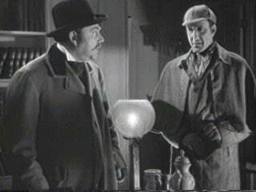
Holmes, “Have you any suggestions?”
Moriarty, “I’m going to break you Holmes. I’m going to bring off right under your nose the most incredible crime of the century, and you’ll never suspect it until it’s too late. That will be the end of you Mr. Sherlock Holmes. And when I’ve beaten and ruined you then I can retire in peace. I’d like to retire; crime no longer amuses me. I’d like to devote my remaining years to abstract science.”
Crafty direction by Alfred Werker, and a solid screenplay by Edwin Blum and William Drake. And, lovely black and white cinematography by Leon Shamroy.
http://www.videodetective.com/movie_trailer/THE_ADVENTURES_OF_SHERLOCK_HOLMES/trailer/P00003200.htm
The Big Sleep
Howard Hawks 1946
Raymond Chandler’s Philip Marlowe finds himself in a nest of vipers, as usual, in this brilliant, if a bit confusing, film noir. Howard Hawks, probably Hollywood’s best dialogue director, has
a field day, juggling juicy lingo penned by an incredible writing team that included William Faulkner, Leigh Brackett, Jules Furthman, and Hawks himself. The problem is, the story makes no sense. But, who cares, with Bogie as Marlowe, and Betty Bacall as a devious femme fatale. The now-famous jockey/horse-Bogie/Betty scene, filled with hilarious 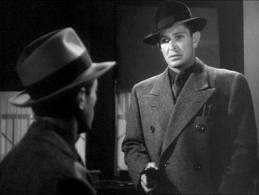 sexual innuendo, was added to the troubled production over a year later to spice things up. A solid cast, including a surprisingly sprite Dorothy Malone, makes this movie work, even if you may have trouble understanding what’s going on. Nice black and white lensing by Sidney Hickox, and a haunting, if sometimes abrupt, musical score by Max Steiner. I’ve seen this picture an embarrassing number of times, but for you, once should be enough – but see it!
sexual innuendo, was added to the troubled production over a year later to spice things up. A solid cast, including a surprisingly sprite Dorothy Malone, makes this movie work, even if you may have trouble understanding what’s going on. Nice black and white lensing by Sidney Hickox, and a haunting, if sometimes abrupt, musical score by Max Steiner. I’ve seen this picture an embarrassing number of times, but for you, once should be enough – but see it!
Best scene: Bogie and Malone in the book store.
http://www.youtube.com/watch?v=5zDqrSctpV
Chinatown
Roman Polanski 1974
1 Oscar
“C’mon Jake, it’s Chinatown”, pleads Gittes’s friend, attempting to drag him away from the horrific car scene at the very end of the film. “Chinatown” means what you think, but it’s also an old expression meaning crazy, upside-down, or meshuganah – something best left alone. This is may be the best period film ever
made, and Polanski does it without the usual cheap tricks like historical references. He does it instead, with a fabulous cast, John Alonzo’s scorched cinematography, Jerry Goldsmith’s luscious score, Anthea Sylbert’s glamorous costumes, and Robert Towne’s Oscar winning screenplay. It’s all about water – Los Angeles doesn’t have any. And the  Hollis Mulwray character is based on William Mulholland, the brilliant head of LA’s water department, who turned this parched patch of Southern California into the metropolis it was to become.
Hollis Mulwray character is based on William Mulholland, the brilliant head of LA’s water department, who turned this parched patch of Southern California into the metropolis it was to become.
Jack Nicholson, as Jake Gittes, a private eye who makes a living on matrimonial cases, is sucked into a noirish whirlpool, where  virtually nothing is as it seems. Polanski does a masterful job of slowing down Nicholson’s usually manic delivery, turning the performance into something more sensual and cunning. Faye Dunawaye is elegantly deceitful, and Polanski himself, plays a murderous knife wielding midget. But it’s John Huston’s Noah Cross that steals the show.
virtually nothing is as it seems. Polanski does a masterful job of slowing down Nicholson’s usually manic delivery, turning the performance into something more sensual and cunning. Faye Dunawaye is elegantly deceitful, and Polanski himself, plays a murderous knife wielding midget. But it’s John Huston’s Noah Cross that steals the show.
One of my all-time fave films. If anyone reading this hasn’t seen it, you’ll probably find a disc at your local library. Delicious sleuthing.
Best scene: Anything with John Huston, and “My sister – my daughter, my sister-my daughter, my sister AND my daughter.”
http://www.youtube.com/watch?v=3aifeXlnoqY
Farewell My Lovely
Dick Richards 1975
This is the third and, in my opinion, best movie made from Raymond Chandler’s 1940 novel. As I’ve previously stated, Philip Marlowe is my favorite Private Eye and, although Bogie was 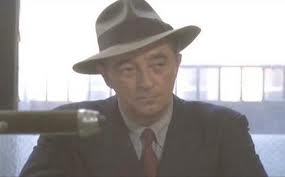 near-perfect in The Big Sleep, Robert Mitchum is even better, as a big, hulking Marlowe, who seems constantly recovering from a whack on the noggin, or the woozy effect of the knock-out drops that some swell dame slipped in his drink. Unlike Polanski’s Chinatown, director Dick Richards uses the historical reference of Joe Dimaggio’s 57 game hitting streak throughout the movie to maintain a feel for 1940 period. OK, so
near-perfect in The Big Sleep, Robert Mitchum is even better, as a big, hulking Marlowe, who seems constantly recovering from a whack on the noggin, or the woozy effect of the knock-out drops that some swell dame slipped in his drink. Unlike Polanski’s Chinatown, director Dick Richards uses the historical reference of Joe Dimaggio’s 57 game hitting streak throughout the movie to maintain a feel for 1940 period. OK, so  it’s a gimmick, but a forgivable one – it works. Come to think of it, just about everything in this movie works. Great Chandler narration like, “I’d hardly reached the corner, when a hand so big I could of sat in it, landed on my shoulder”. Besides a wonderfully effective Mitchum, Charlotte Rampling provides the heat in a cast rounded out by John Ireland and Sylvia Miles.
it’s a gimmick, but a forgivable one – it works. Come to think of it, just about everything in this movie works. Great Chandler narration like, “I’d hardly reached the corner, when a hand so big I could of sat in it, landed on my shoulder”. Besides a wonderfully effective Mitchum, Charlotte Rampling provides the heat in a cast rounded out by John Ireland and Sylvia Miles.  There’s even a quick glimpse of Sly Stallone in one of his first movie roles. Dark and sultry lensing, once again by John Alonzo, and a delicious musical score by David Shire make this recreation of 1940 Los Angeles believable. If you can find a DVD of this – pounce.
There’s even a quick glimpse of Sly Stallone in one of his first movie roles. Dark and sultry lensing, once again by John Alonzo, and a delicious musical score by David Shire make this recreation of 1940 Los Angeles believable. If you can find a DVD of this – pounce.
http://www.youtube.com/watch?v=htf7JgTmjdY
Kiss Me Deadly
Robert Aldrich 1955
No more Mr. Nice Guy – not with Mickey Spillane’s brutal, tough, take-no-prisoners Mike Hammer on the case, and in this case, the case is a box – Pandora’s Box, filled with nuclear material ready to go off. Ah, the Fifties, when every right-thinking American had  the A-Bomb on his mind, 24 hours a day. An apocalyptic murder mystery? You bet, and Mike Hammer’s the right guy to put the pieces together. A nice turn here by Ralph Meeker, as the Private Eye with an attitude problem. And the movie debuts of Cloris Leachman, and Maxine Cooper
the A-Bomb on his mind, 24 hours a day. An apocalyptic murder mystery? You bet, and Mike Hammer’s the right guy to put the pieces together. A nice turn here by Ralph Meeker, as the Private Eye with an attitude problem. And the movie debuts of Cloris Leachman, and Maxine Cooper
On a lonely country road, Hammer gives a ride to Christina  (Cloris Leachman), an attractive hitchhiker wearing nothing but a trench coat. She has escaped from a nearby mental institution. Thugs waylay them and Hammer awakens in some unknown location where he hears Christina screaming and being tortured to death. The thugs then push Hammer’s car off a cliff with Christina’s body and an unconscious Hammer inside. Hammer next awakens in a hospital with Velda (Maxine Copper) at his bedside. He decides to pursue the case, both for vengeance and because, “She (Christina) must be connected with something big”.
(Cloris Leachman), an attractive hitchhiker wearing nothing but a trench coat. She has escaped from a nearby mental institution. Thugs waylay them and Hammer awakens in some unknown location where he hears Christina screaming and being tortured to death. The thugs then push Hammer’s car off a cliff with Christina’s body and an unconscious Hammer inside. Hammer next awakens in a hospital with Velda (Maxine Copper) at his bedside. He decides to pursue the case, both for vengeance and because, “She (Christina) must be connected with something big”.
 “The great whatsit”, as Velda calls it, at the center of Hammer’s quest, is a small, mysterious valise that is hot to the touch and contains a dangerous, glowing substance. It represents, of course, the 1950s Cold War fear and nuclear paranoia about the atomic bomb that was all the rage back then.
“The great whatsit”, as Velda calls it, at the center of Hammer’s quest, is a small, mysterious valise that is hot to the touch and contains a dangerous, glowing substance. It represents, of course, the 1950s Cold War fear and nuclear paranoia about the atomic bomb that was all the rage back then.
A dark, noirish nightmare, deftly handled by director Aldrich. Murky, night time Los Angeles locations, made to shine by cinematographer Ernst Laszlo. This is a low budget ($400,000), no nonsense, first rate film noir, with a game cast, and a savvy director. A film not to miss.
http://www.youtube.com/watch?v=qCuhR_SyH8k
Laura
Otto Preminger 1944
OK, I know, I know – it’s not a private eye movie, it’s a cop caper, but it’s Laura, the one and only, and this is MY list so it’s just tough. We have to get past this. Good.
 A detective (Dana Andrews) investigating the grisly murder of a famous actress (Gene Tierney) falls in love with her painting. The more he hears about her, the deeper his spell. (I’d do the same thing if that music followed me around all the time) Everyone Andrews interviews seem to be in love with her too. Venomous gossip columnist Waldo Lydecker
A detective (Dana Andrews) investigating the grisly murder of a famous actress (Gene Tierney) falls in love with her painting. The more he hears about her, the deeper his spell. (I’d do the same thing if that music followed me around all the time) Everyone Andrews interviews seem to be in love with her too. Venomous gossip columnist Waldo Lydecker  (Clifton Webb) seems to be the late Laura’s biggest booster. Her grief stricken fiancé Shelby (Vincent Price) is beside himself. Just who would kill such a beloved creature? Just when the audience settles in to accepting lovely Laura’s demise, plot twist of plot twists, the door to her apartment opens, and in walks, you guessed it, Laura, live and lovelier than ever. Andrews, who had fallen asleep on the couch under Laura’s portrait, is awaked to find his obsession, alive and kicking, and wondering what this stranger is doing in her apartment. As Andrews adjusts to this new situation, he finds the living Laura to be everything he’d
(Clifton Webb) seems to be the late Laura’s biggest booster. Her grief stricken fiancé Shelby (Vincent Price) is beside himself. Just who would kill such a beloved creature? Just when the audience settles in to accepting lovely Laura’s demise, plot twist of plot twists, the door to her apartment opens, and in walks, you guessed it, Laura, live and lovelier than ever. Andrews, who had fallen asleep on the couch under Laura’s portrait, is awaked to find his obsession, alive and kicking, and wondering what this stranger is doing in her apartment. As Andrews adjusts to this new situation, he finds the living Laura to be everything he’d 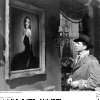 hoped. But, who was the disfigured corpse, who everyone mistook for Laura? It turns out that Lydecker’s obsession with our leading lady got the better of him. If he couldn’t have her, he’d kill her instead. But he shot the wrong woman, and she was too disfigured to identify, so everyone assumed it
hoped. But, who was the disfigured corpse, who everyone mistook for Laura? It turns out that Lydecker’s obsession with our leading lady got the better of him. If he couldn’t have her, he’d kill her instead. But he shot the wrong woman, and she was too disfigured to identify, so everyone assumed it  was Laura’s body. A living Laura is just too much for Lydecker to accept, so he tries once again to kill her. Andrews intercedes, shooting the murderous Lydecker in the knick of time. As Waldo lies dying on Laura’s carpet, and of course under the portrait, his last words are, “Goodbye. Laura. Goodbye, my love.”
was Laura’s body. A living Laura is just too much for Lydecker to accept, so he tries once again to kill her. Andrews intercedes, shooting the murderous Lydecker in the knick of time. As Waldo lies dying on Laura’s carpet, and of course under the portrait, his last words are, “Goodbye. Laura. Goodbye, my love.”
It sounds pretty silly, but it works. Tierney is simply too beautiful to believe, and a game cast does wonders with this material. But, maybe the most important element, the glue that binds this  classic together, is David Raskin’s haunting, memorable musical score – one of the real champs. I wonder what happened to the portrait?
classic together, is David Raskin’s haunting, memorable musical score – one of the real champs. I wonder what happened to the portrait?
http://www.youtube.com/watch?v=u6f8jRplej8
The Maltese Falcon
John Huston 1941
This 1941 Warner Brothers release is the third movie version of Dashiell Hammett’s novel. The first, released in 1931, starred Ricardo Cortez as Sam Spade, while the second, Satan Met a Lady,  was a loose adaptation that was a bit more comedic. It was released in 1936, with Warren William, and a very young Bette Davis in the leading roles. Warner Brothers had been prevented from re-releasing the 1931 version by the Hays Office censors, because of its “lewd” content, so they went into production in 1941, on a new, cleaned up version, which is the beauty we all know and love.
was a loose adaptation that was a bit more comedic. It was released in 1936, with Warren William, and a very young Bette Davis in the leading roles. Warner Brothers had been prevented from re-releasing the 1931 version by the Hays Office censors, because of its “lewd” content, so they went into production in 1941, on a new, cleaned up version, which is the beauty we all know and love.
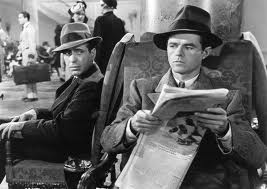 First-time director John Huston wanted Bogie to play Sam Spade, but producer Hal Wallis wanted veteran leading man George Raft, who rejected it because he didn’t want to work with a first-time director. Raft also turned down the lead in Raoul Walsh’s “High Sierra”, the film that launched Bogie’s career as a leading man.
First-time director John Huston wanted Bogie to play Sam Spade, but producer Hal Wallis wanted veteran leading man George Raft, who rejected it because he didn’t want to work with a first-time director. Raft also turned down the lead in Raoul Walsh’s “High Sierra”, the film that launched Bogie’s career as a leading man.
 An aside here – I’m reading the Hammett novel for the first time as I’m writing this. I’ve read all of Raymond Chandler, but somehow missed Hammett.
An aside here – I’m reading the Hammett novel for the first time as I’m writing this. I’ve read all of Raymond Chandler, but somehow missed Hammett.
So, is The Maltese Falcon the ultimate private eye caper? You be the judge, but if it’s not, then it’s certainly close. Warner’s had the best ensemble of character actors in Hollywood,  and most of them strut their stuff here. Beyond Bogey and Mary Astor, there’s Peter Lorre as Joel Cairo, Sidney Greenstreet as Gutman, Barton MacClane and Ward Bond as Spade’s detective buddies, and Lee Patrick as Effie, who Spade addresses as “Precious” and “Darlin”. Huston even hired his father Walter, to play the ship’s Captain.
and most of them strut their stuff here. Beyond Bogey and Mary Astor, there’s Peter Lorre as Joel Cairo, Sidney Greenstreet as Gutman, Barton MacClane and Ward Bond as Spade’s detective buddies, and Lee Patrick as Effie, who Spade addresses as “Precious” and “Darlin”. Huston even hired his father Walter, to play the ship’s Captain.
Whose got the bird, is the game played here. What exactly IS this Maltese Falcon, anyway? And why is it worth so many murders?  Astor wants it, Greenstreet wants it, Lorre wants it, and the body count is mounting. Juicy, nest of vipers stuff here, and Huston is up to the task of getting the most out of this remarkable cast. A solid, tangy screenplay, written by the first-time director, nice dark lensing by Arthur Edeson, and a warm musical score by Arthur Deutsch. A bird for all seasons.
Astor wants it, Greenstreet wants it, Lorre wants it, and the body count is mounting. Juicy, nest of vipers stuff here, and Huston is up to the task of getting the most out of this remarkable cast. A solid, tangy screenplay, written by the first-time director, nice dark lensing by Arthur Edeson, and a warm musical score by Arthur Deutsch. A bird for all seasons.
“You’re good. You’re very good”, say’s Bogie to Astor, and who among us could argue?
http://www.youtube.com/watch?v=yRSCV2qc2IY
Murder, My Sweet
Edward Dmytryk 1944
This is the second movie made from Raymond Chandler’s Farewell My Lovely novel, and has a very different feel from the 1975, and third remake, above. The powers that be at RKO thought  that changing the title to Murder, My Sweet would add some zip the film’s box office. Who knows, but the film did well.
that changing the title to Murder, My Sweet would add some zip the film’s box office. Who knows, but the film did well.
Casting crooner Dick Powell in the Marlowe role was a gamble, but he’s an effective, if different gumshoe. With a small budget to work with, and 1944’s censorship problems to overcome, Dmytryk does an admirable  job creating a dark, violent world for Marlowe and his cronies to inhabit. Nice turns by Claire Trevor, Anne Shirley, and Otto Kruger. And, solid black and white camerawork by Harry Wild, plus a low-key musical score by Roy Webb rounds out the production. Powell is surprising here, and worth a look. Like Alec Guinness as George Smiley, when I read Chandler, I hear Mitchum’s voice, but Powell gives us an alternative.
job creating a dark, violent world for Marlowe and his cronies to inhabit. Nice turns by Claire Trevor, Anne Shirley, and Otto Kruger. And, solid black and white camerawork by Harry Wild, plus a low-key musical score by Roy Webb rounds out the production. Powell is surprising here, and worth a look. Like Alec Guinness as George Smiley, when I read Chandler, I hear Mitchum’s voice, but Powell gives us an alternative.
http://www.youtube.com/watch?v=hIVAF6AVaSw
Murder on the Orient Express
Sidney Lumet 1974
Agatha Chistie had been quite displeased with some film adaptations of her works made in the 1960s, and accordingly, was  unwilling to sell any more film rights. When Nat Cohen, chairman of EMI Films, and producer John Brabourne attempted to get her approval for this film, they felt it necessary to have Lord Mountbatten of Burma (of the British Royal Family and also Brabourne’s father-in-law) help them broach the subject.
unwilling to sell any more film rights. When Nat Cohen, chairman of EMI Films, and producer John Brabourne attempted to get her approval for this film, they felt it necessary to have Lord Mountbatten of Burma (of the British Royal Family and also Brabourne’s father-in-law) help them broach the subject.
In the end, according to Christie’s husband Max Mallowan, “Agatha herself has always been allergic to the adaptation of her  books by the cinema, but was persuaded to give a rather grudging appreciation to this one.” Christie’s biographer, Gwen Robyns, quoted her as saying, “It was well made except for one mistake. It was Albert Finney, as my detective Hercule Poirot. I wrote that he had the finest moustache in England — and he didn’t in the film. I thought that a pity — why shouldn’t he?”
books by the cinema, but was persuaded to give a rather grudging appreciation to this one.” Christie’s biographer, Gwen Robyns, quoted her as saying, “It was well made except for one mistake. It was Albert Finney, as my detective Hercule Poirot. I wrote that he had the finest moustache in England — and he didn’t in the film. I thought that a pity — why shouldn’t he?”
Hey, Finney’s waxed lip-rug worked for me, but so did everything  else in this dazzling film. I’m not the biggest fan of star vehicles, but Sidney Lumet somehow coaxed, cajoled, persuaded, and probably black-mailed this extraordinary ensemble of show business luminaries into one remarkable performance after another. Finney is a fastidious, almost effeminate Poirot, surrounded by a passenger list that includes (I’m going to name them all because it’s just such an amazing group) Lauren Bacall, Sean Connery, Ingrid Bergman, Michael York, Vanessa Redgrave,
else in this dazzling film. I’m not the biggest fan of star vehicles, but Sidney Lumet somehow coaxed, cajoled, persuaded, and probably black-mailed this extraordinary ensemble of show business luminaries into one remarkable performance after another. Finney is a fastidious, almost effeminate Poirot, surrounded by a passenger list that includes (I’m going to name them all because it’s just such an amazing group) Lauren Bacall, Sean Connery, Ingrid Bergman, Michael York, Vanessa Redgrave, 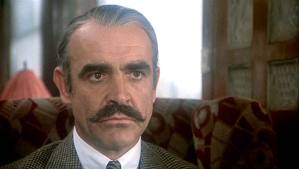 Jacqueline Bisset, Richard Widmark, John Gielgud, Anthony Perkins, Martin Balsam, Rachel Roberts, Wendy Hiller, Denis Quilley, Colin Blakely, Jean-Pierre Cassel, and George Coulouris. And, their performances are all uniquely effective, and totally entertaining.
Jacqueline Bisset, Richard Widmark, John Gielgud, Anthony Perkins, Martin Balsam, Rachel Roberts, Wendy Hiller, Denis Quilley, Colin Blakely, Jean-Pierre Cassel, and George Coulouris. And, their performances are all uniquely effective, and totally entertaining.
A complex Agatha Christie mystery, in the hands of a neurotic,  self-involved detective, on the world’s greatest train, with a trainload of odd characters as suspects. Top notch lensing here by the masterful Geoffrey Unsworth, a lovely, waltzy score by Richard Rodney Bennett, and Lumet’s crafty direction make this memorable.
self-involved detective, on the world’s greatest train, with a trainload of odd characters as suspects. Top notch lensing here by the masterful Geoffrey Unsworth, a lovely, waltzy score by Richard Rodney Bennett, and Lumet’s crafty direction make this memorable.
Best lines:
A throaty Finney, “Touch notheeeeeeng”
John Gielgud as a British valet, “It all started in a fracas in the mess, over a desert called “Spotted Dick”
Igrid Bergman as a Swedish missionary to Africa, “I vont to, um, help little brown babies, who, um, are less fortunate than, um, myself”
http://www.youtube.com/watch?v=JTYA01glGqo
The Thin Man
W. S. Van Dyke 1934
Dashiell Hammett’s crafty couple Nick and Nora Charles are on the case here, in the original of, what would become, a series of  detective capers. They’ve even got a snoopy, clue-fetching dog, Asta – played by a wire haired fox terrier named Skippy. Nick (William Powell), a retired detective, and his wife Nora (Myrna Loy) are attempting to settle in to retirement when the disappearance of a friend pulls him back into professional snooping. Nick decides he’ll solve the case, much to the amusement of his socialite wife.
detective capers. They’ve even got a snoopy, clue-fetching dog, Asta – played by a wire haired fox terrier named Skippy. Nick (William Powell), a retired detective, and his wife Nora (Myrna Loy) are attempting to settle in to retirement when the disappearance of a friend pulls him back into professional snooping. Nick decides he’ll solve the case, much to the amusement of his socialite wife. 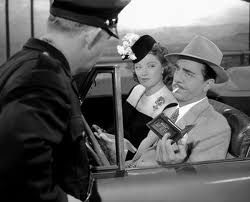 The dead bodies, and empty martini glasses pile up, as an ever-tipsy Nick and Nora, endlessly clever banter at the ready, roll up their sleeves, along with their pup, and do some slippery sleuthing.
The dead bodies, and empty martini glasses pile up, as an ever-tipsy Nick and Nora, endlessly clever banter at the ready, roll up their sleeves, along with their pup, and do some slippery sleuthing.
All of the suspects are invited to a hilarious dinner party, where Nick and Nora, in a series of brilliant, if tipsy, deductions, solve the mystery. Clever  dialogue, written by Albert Hackett and Frances Goodrich, and deftly delivered by two pros, drives this unique, comedic mystery. Sparkling black and white lensing by James Wong Howe, and strong ensemble work by Metro’s talent pool make this a movie not to miss. Funny doings.
dialogue, written by Albert Hackett and Frances Goodrich, and deftly delivered by two pros, drives this unique, comedic mystery. Sparkling black and white lensing by James Wong Howe, and strong ensemble work by Metro’s talent pool make this a movie not to miss. Funny doings.
http://www.youtube.com/watch?v=nSNJ-8ouQEM
*
© 2011 Shaun Costello
SALVATORE’S MAID
SALVATORE’S MAID
She had breasts the size of basketballs.
By Shaun Costello
This story is excerpted from my childhood memoir:
THE LAST TIME I SAW JESUS
Surviving God and Elvis in the time of ‘Duck and Cover’
My new friend Jimmy’s family had recently moved to the Gardens from Brooklyn. His father was a famous theatrical photographer who took pictures of movie stars. They lived in an enormous Tudor house on Greenway South, one on the nicest streets in the Gardens where I began to spend a great deal of time. One day Jimmy asked me if I had ever touched a breast. Other than the pictures I saw of Eddie Mann’s mom, I had never even seen one. He told me that he had touched a breast, and if I was interested, he could arrange for me to touch one too. Jimmy had a neighbor named Salvatore, who lived just down the street, and Salvatore’s family had a black maid named Jessie who, for fifty cents would let you fondle her breasts for five minutes. “And they’re really big too”, Jimmy added. This was a shocking revelation. Breasts. Actual breasts. You could touch them and even kiss them, and all for fifty cents. I was nervous but game, and Jimmy made the arrangements.
“What do you do with them?”, I asked. “Anything you want”, said Jimmy. “But why do I want to touch them?” I’m nervous now. “Because they’re beasts, stupid”.
Salvatore lived in a big brick house just down the street from Jimmy. Jessie, the maid lived in a room over the garage, and Salvatore, with Dolphy Maggiore in tow, met us outside. We hid our bikes in the bushes behind the house. Salvatore was very  concerned that everyone had their money in their hands because Jessie could get ornery and make a fuss. As Salvatore opened the outside door to the stairway that led to Jessie’s room there was a horrible smell, something I had never smelled before, and it became worse as we climbed the stairs. A smell of something burning. A pungent, rancid smell. Salvatore knocked on the door. “Who?”, came from the other side. “It’s me”,
concerned that everyone had their money in their hands because Jessie could get ornery and make a fuss. As Salvatore opened the outside door to the stairway that led to Jessie’s room there was a horrible smell, something I had never smelled before, and it became worse as we climbed the stairs. A smell of something burning. A pungent, rancid smell. Salvatore knocked on the door. “Who?”, came from the other side. “It’s me”, 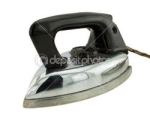 said Salvatore. “Well c’mon honey, I ain’t got all day”. The door opened, and inside, sitting in front of a large mirror, applying hot irons to straighten her hair, was the biggest, fattest black woman I had ever seen. She spoke to us through the mirror. “You chilluns got my jingle?” she asked. Salvatore made a gesture that suggested giving her the money, so we did. At this point she let the robe she was wearing slip to her waste revealing huge brown breasts the size of basketballs, to the amazement and delight of the white chilluns. “C’mon now, don’t be shy. You got five minutes. Love’m up. C’mon now, love’m up”. With hesitation, fearing the unknown but mesmerized by the possibilities, the little fingers of the white chilluns
said Salvatore. “Well c’mon honey, I ain’t got all day”. The door opened, and inside, sitting in front of a large mirror, applying hot irons to straighten her hair, was the biggest, fattest black woman I had ever seen. She spoke to us through the mirror. “You chilluns got my jingle?” she asked. Salvatore made a gesture that suggested giving her the money, so we did. At this point she let the robe she was wearing slip to her waste revealing huge brown breasts the size of basketballs, to the amazement and delight of the white chilluns. “C’mon now, don’t be shy. You got five minutes. Love’m up. C’mon now, love’m up”. With hesitation, fearing the unknown but mesmerized by the possibilities, the little fingers of the white chilluns
reached for the huge, soft, brown basketballs, while Jessie applied the hot irons to her singed hair, creating an unbearable smell, and Symphony Sid’s radio theme song wafted through the smoke, and all I could think of was how I could tell this in confession on Saturday.
*
© 2011 Shaun Costello
IN SHERMAN’S GARAGE
IN SHERMAN’S GARAGE
She Looked So Peaceful
By Shaun Costello
Excerpted from the manuscript of my childhood memoir:
THE LAST TIME I SAW JESUS
Surviving God and Elvis in the time of ‘Duck and Cover’
The Kew Forest School was located right on the border between the Forest Hills Gardens, and Kew Gardens, the next community to the East. Their student body was made up of a pretty even smattering of Protestants and  Jews, with a few recovering Catholics thrown in for good measure. It was a small, secular, private school, attended by students from all over the borough of Queens. My friend Jimmy went there, and the Bullock twins, the Baxter brothers, Jeff McGann, Frank Sperandeo, and several other kids I knew from the Gardens. It was the kind of institution that was completely outside my experience. There was no hitting, no statues with internal organs showing, no threats, no Sousa marches, no praying, no music room/punishment chamber, and no promise of the eternal agony of roasting in the fires of hell for the egregious crime of talking on line. I don’t think they even had a line. A very mysterious place.
Jews, with a few recovering Catholics thrown in for good measure. It was a small, secular, private school, attended by students from all over the borough of Queens. My friend Jimmy went there, and the Bullock twins, the Baxter brothers, Jeff McGann, Frank Sperandeo, and several other kids I knew from the Gardens. It was the kind of institution that was completely outside my experience. There was no hitting, no statues with internal organs showing, no threats, no Sousa marches, no praying, no music room/punishment chamber, and no promise of the eternal agony of roasting in the fires of hell for the egregious crime of talking on line. I don’t think they even had a line. A very mysterious place.
 Knowing their route home from school, I would sometimes intercept Stuart and Stephen Bullock, and the three of us would cruise the Gardens on our bikes for a while before winding up at their house for a snack. I liked the Bullocks. They were my size, had the same coloring, were totally unchallenging, and were even worse at sports than I was. Sometimes it was comforting to wallow in the company of compatible mediocrity. My friend Jimmy, on the other hand, who was a constant mental challenge, was good at everything. He was the best natural athlete I had ever seen, the best tennis player his age in the borough. The first time he ever picked up a basketball in his life I saw him make six shots in a row from the foul line. Six shots. It took me a year of daily practice before I
Knowing their route home from school, I would sometimes intercept Stuart and Stephen Bullock, and the three of us would cruise the Gardens on our bikes for a while before winding up at their house for a snack. I liked the Bullocks. They were my size, had the same coloring, were totally unchallenging, and were even worse at sports than I was. Sometimes it was comforting to wallow in the company of compatible mediocrity. My friend Jimmy, on the other hand, who was a constant mental challenge, was good at everything. He was the best natural athlete I had ever seen, the best tennis player his age in the borough. The first time he ever picked up a basketball in his life I saw him make six shots in a row from the foul line. Six shots. It took me a year of daily practice before I  even came close to that. He was just better than I was at everything, and probably always would be. He was my best friend, but sometimes I needed a short respite from constantly coming in second, and the Bullock twins were just what the Doctor ordered. The boys were funny, their parents were welcoming and friendly, and the whole after school experience at their house was pretty positive. When it was time for me to return home, we said our good-byes, and made plans for a repeat performance the next day.
even came close to that. He was just better than I was at everything, and probably always would be. He was my best friend, but sometimes I needed a short respite from constantly coming in second, and the Bullock twins were just what the Doctor ordered. The boys were funny, their parents were welcoming and friendly, and the whole after school experience at their house was pretty positive. When it was time for me to return home, we said our good-byes, and made plans for a repeat performance the next day.
It was about a five-minute bike ride from their house to mine, and riding a bicycle around the Gardens was one of the best things about living there. There was very little traffic, and after a while you got to know most of the residents, so that people would wave to you as you cruised by. After  collecting waves from Mrs. Watson, and Doctor Kauer, I passed by Sherman Becker’s house, and there was old Sherm, sitting on a bench next to his garage. The word on Sherman Becker was that he was some kind of genius. He went to a special school in Manhattan for kids with extremely high IQ’s and, although a bit strange, he was a nice enough kid to be around. Sometimes in the middle of a sentence Sherman would drift off to some place far away, and
collecting waves from Mrs. Watson, and Doctor Kauer, I passed by Sherman Becker’s house, and there was old Sherm, sitting on a bench next to his garage. The word on Sherman Becker was that he was some kind of genius. He went to a special school in Manhattan for kids with extremely high IQ’s and, although a bit strange, he was a nice enough kid to be around. Sometimes in the middle of a sentence Sherman would drift off to some place far away, and  just stare at nothing that was visible to anyone else. I never saw it, but kids told me than Sherman had seizures, where his whole body would shake, and he would fall on the floor and try to swallow his tongue. He had an illness called Epilepsy, and had to take medication that sometimes made him moody. “Hey Sherm”, I yelled, as I cruised by, but he didn’t seem to notice me, and I continued on down the street. After a few blocks I stopped. Something was wrong. Sherman looked like he was doing one of his, “staring into oblivion” routines, and if his parents weren’t home maybe it was dangerous, so I turned abound and headed back to his house.
just stare at nothing that was visible to anyone else. I never saw it, but kids told me than Sherman had seizures, where his whole body would shake, and he would fall on the floor and try to swallow his tongue. He had an illness called Epilepsy, and had to take medication that sometimes made him moody. “Hey Sherm”, I yelled, as I cruised by, but he didn’t seem to notice me, and I continued on down the street. After a few blocks I stopped. Something was wrong. Sherman looked like he was doing one of his, “staring into oblivion” routines, and if his parents weren’t home maybe it was dangerous, so I turned abound and headed back to his house.
He was sitting on the bench next to his garage, and just staring into space. I had seen him do this many times and, sooner or later, he would just snap out of it. I tried talking with him, but got no response. Sherman was somewhere  far away, and I’m sure he had no idea that I was even there. It was at this point that I became aware of a noise. A humming, mechanical sound, like a car motor, but very quiet, like it was far away. But it wasn’t far away. It was in Sherm’s garage, and with the doors closed you could hardly hear it. The Sisters had shown us safety films at school about the dangers of running a car
far away, and I’m sure he had no idea that I was even there. It was at this point that I became aware of a noise. A humming, mechanical sound, like a car motor, but very quiet, like it was far away. But it wasn’t far away. It was in Sherm’s garage, and with the doors closed you could hardly hear it. The Sisters had shown us safety films at school about the dangers of running a car  inside a garage. There was some kind of gas that put you to sleep, and you never woke up. So the logical thing seemed to be for me to open the garage doors and somehow turn the car off. I opened both of the large front doors, and the smoke inside was a silvery color, and had a gasoline smell. There was a small back door to the building so I ran around and opened it, thinking that the breeze would blow the poisonous fumes from the garage.
inside a garage. There was some kind of gas that put you to sleep, and you never woke up. So the logical thing seemed to be for me to open the garage doors and somehow turn the car off. I opened both of the large front doors, and the smoke inside was a silvery color, and had a gasoline smell. There was a small back door to the building so I ran around and opened it, thinking that the breeze would blow the poisonous fumes from the garage.
I stood there, waiting for the fumes to clear so that I could somehow shut the car off, when I saw it. There was something or someone in the car, behind the steering wheel. I froze. As the breeze blew the silver smoke past me I could see that it was a person. All I knew was that I had to turn the car off, so I covered my nose and mouth and ran for the front door on the driver’s side. I opened the door to reach for the keys when I came face to face with Mrs. Becker. I gasped and flew backwards, crashing into the garage wall. My lungs were expanding and contracting with such force that I could hear my breath over the din of the motor, and I could barely see through the tears. I was violently crying, not from sadness, but from shock and fear. I had to turn that car off, no matter what, so I opened the door again and reached across Mrs. Becker’s lap and fumbled with key, which was on the right of the steering column. Doing this bought my face inches from hers, and my whole body was trembling so violently that I couldn’t seem to turn the key. But then I did, and the motor stopped, and I was still only inches from Mrs. Becker, and I could hear myself gasping for air. I wanted to say something to her. Maybe she was only asleep. She looked so peaceful. But my mouth wouldn’t move. The words wouldn’t come. Maybe she would open her eyes, and stretch her arms the way people do when they wake up, and look down at me and invite me to dinner. But she didn’t. She didn’t move. I realized that Sherm was still outside so I backed slowly out of the garage, never taking my eyes off Mrs. Becker.
Sherm hadn’t moved a muscle. His mind was occupying another world altogether, either because be was steeped in the denial of this horrible event, or because that’s just what his mind sometimes did. There was no 911 back in the fifties. Emergencies were reported to the telephone operator, who then forwarded the information to the appropriate authorities, so I dialed “O”. When she answered I said that my name was Sherman Becker, told her the address, and that there had been a terrible accident, and I hung up. Outside I tried to communicate with Sherm, but had no success. He had no idea that I was there. I had done what I could do. I had tuned off the motor, and reported the tragedy, and the best thing for me to do was to get out of there before the police came. No one would ever know that I had been there. They would simply assume that Sherman turned off the car motor, called the operator, and then flipped out, which was pretty understandable under the circumstances. I just didn’t want to be involved in this.
I raced toward home as fast my legs could peddle, but after a while I came to a stop, dropped my bike, sat down on the curb and started sobbing, completely overwhelmed by the events of the past few minutes. Or was it longer? I had lost track of time. My lungs seemed near exploding, my breath gushing in and out, wheezing like an asthmatic gasping for air. I had seen dead people before on Wayne Baxter’s cadaver tour, but this was different. I knew Mrs. Becker. She had always been nice to me, and now she was dead. She wanted to be dead so she closed her garage doors, slid behind the wheel, turned on the motor, fell asleep, and then died, just like in the safety film we saw in school. But she didn’t look dead. Not like the translucent cadavers at the Fox Funeral Home. She looked like she was asleep. She looked so peaceful.
*
© 2009 Shaun Costello
THE EXORCIST
THE EXORCIST
Drowning Satan with Holy Water-boarding
By Shaun Costello
This story is excerpted from the manuscript of my childhood memoir;
“The Last Time I Saw Jesus”
Surviving God and Elvis in the time of ‘Duck and Cover’
Children, like sharks with blood in the water, or wild dogs who smell fear, can spot weakness a mile away, and will bide their time until the moment is right  to pounce. Sister Lenore showed up one day at Our Lady Queen of Martyrs, and became our teacher. She replaced Sister Saint Gerald, who was ill and had to be sent to convalesce wherever nuns went to do that sort of thing. Nuns never talked about themselves so, other than being our teachers, having incredibly clean fingernails, wearing rimless spectacles, enjoying hitting children with inanimate objects, and seldom smiling, we knew little about them. We knew that their order, The Sisters of the Immaculate Conception, came from Scranton Pennsylvania, but that’s all. I’m not even sure how we knew that, but somehow we did. So when Sister Lenore showed up that morning, the occasion was ripe for supposition.
to pounce. Sister Lenore showed up one day at Our Lady Queen of Martyrs, and became our teacher. She replaced Sister Saint Gerald, who was ill and had to be sent to convalesce wherever nuns went to do that sort of thing. Nuns never talked about themselves so, other than being our teachers, having incredibly clean fingernails, wearing rimless spectacles, enjoying hitting children with inanimate objects, and seldom smiling, we knew little about them. We knew that their order, The Sisters of the Immaculate Conception, came from Scranton Pennsylvania, but that’s all. I’m not even sure how we knew that, but somehow we did. So when Sister Lenore showed up that morning, the occasion was ripe for supposition.
Maybe she had been a missionary in darkest Africa, and was laid low with jungle fever, to be sent back to the States as a teacher. Maybe she toiled for many  years in a convent dedicated to the glory of cleaning the toilets of the poor, and as a reward for always producing the cleanest bowl she was sent to
years in a convent dedicated to the glory of cleaning the toilets of the poor, and as a reward for always producing the cleanest bowl she was sent to  our wonderful Parish. Maybe she worked as the personal assistant to the Pope himself, right there in Rome, but was caught with her fingers in the poor box, and was sent to teach at our school as punishment for her sins. We’d never really know for sure, but it was fun to pretend.
our wonderful Parish. Maybe she worked as the personal assistant to the Pope himself, right there in Rome, but was caught with her fingers in the poor box, and was sent to teach at our school as punishment for her sins. We’d never really know for sure, but it was fun to pretend.
Anyway, here she was, so we’d just have to make the best of it. She seemed nice enough. Certainly nicer than that cranky Sister Saint Gerald, who was  always coughing into a handkerchief, and swatting kids on the hands with rulers. She seemed friendly, eager to please, even helpful, but something was wrong. It was hard to put your finger on just what, but something was wrong with Sister Lenore.
always coughing into a handkerchief, and swatting kids on the hands with rulers. She seemed friendly, eager to please, even helpful, but something was wrong. It was hard to put your finger on just what, but something was wrong with Sister Lenore.
The exorcisms began when, one morning, we found  a Holy Water Fountain just inside the door to our classroom. Sister instructed us to dip our fingers in the sacred waters and cross ourselves before entering the classroom, a common practice when entering or leaving a church. She told us that little children have tiny demons inside them that cause bad behavior, and demons just could not abide the sacred, soul-cleansing waters. This level of demon control lasted for only a few weeks, before she began sprinkling Holy Water directly from a bottle onto the heads of the unruly little perps, whose behavioral irregularities were obviously a direct result of Satanic possession.
a Holy Water Fountain just inside the door to our classroom. Sister instructed us to dip our fingers in the sacred waters and cross ourselves before entering the classroom, a common practice when entering or leaving a church. She told us that little children have tiny demons inside them that cause bad behavior, and demons just could not abide the sacred, soul-cleansing waters. This level of demon control lasted for only a few weeks, before she began sprinkling Holy Water directly from a bottle onto the heads of the unruly little perps, whose behavioral irregularities were obviously a direct result of Satanic possession.
During playground conversations over the next few weeks among the core group of class troublemakers, of which I was certainly a part, we came to the conclusion that the woman was a fruitcake, and if pushed far enough, she was bound to crack. Since we knew that she was the only nun in the school who sprinkled water on misbehaving kids rather than swatting them with yardsticks, we figured it was safe to go on the attack.
So it began. Spitball wars, paper plane dog fights, strange messages from Satan that somehow wound  up on the blackboard, demonic drawings left in her desk drawers, and the odd behavior of Jim Freeny, the class arch-criminal, whose whole body sometimes shook as a direct result of Satanic possession. For our new teacher, this was the beginning of the end. Sister would walk up and down the aisles spraying her students with Holy Water
up on the blackboard, demonic drawings left in her desk drawers, and the odd behavior of Jim Freeny, the class arch-criminal, whose whole body sometimes shook as a direct result of Satanic possession. For our new teacher, this was the beginning of the end. Sister would walk up and down the aisles spraying her students with Holy Water  chanting, “You’re possessed, possessed by devils, possessed by Satan, possessed, possessed. It started as a muffled giggle, but Jim Freeny started laughing and couldn’t seem to stop. The more he laughed, the wetter he became, as sister had singled him out as Satan’s host. She kept dousing him with the sacred fluids, and the wetter he got the louder he laughed, and the more she kept screaming at the devil to leave this child, until finally, frustrated to a point of holy rage, she cold-cocked Freeny with the Holy Water bottle.
chanting, “You’re possessed, possessed by devils, possessed by Satan, possessed, possessed. It started as a muffled giggle, but Jim Freeny started laughing and couldn’t seem to stop. The more he laughed, the wetter he became, as sister had singled him out as Satan’s host. She kept dousing him with the sacred fluids, and the wetter he got the louder he laughed, and the more she kept screaming at the devil to leave this child, until finally, frustrated to a point of holy rage, she cold-cocked Freeny with the Holy Water bottle.
So, Sister Lenore stood above Jim Freeny’s unconscious form, now lying in the aisle next to his desk, as fifty-nine little mouths silently hung open, stunned at what they had just witnessed, and wondering what would happen  next, and she began to scream. She screamed out the classroom door, and screamed down the stairwell, and screamed all the way back to the convent, intensely watched by fifty nine sets of little eyes pressed against the classroom windows. Freeny was taken to the hospital with a concussion, and never admitted whether he was really unconscious, or just pretending, a subject of discussion for years afterward. The next day someone saw Sister Lenore, suitcase in hand, being helped into a sedan with Pennsylvania license plates. She was never seen again. Maybe she should have stayed in Africa. Accidentally wondering into a pride of lions had to be safer than teaching fourth grade at Our Lady Queen of Martyrs.
next, and she began to scream. She screamed out the classroom door, and screamed down the stairwell, and screamed all the way back to the convent, intensely watched by fifty nine sets of little eyes pressed against the classroom windows. Freeny was taken to the hospital with a concussion, and never admitted whether he was really unconscious, or just pretending, a subject of discussion for years afterward. The next day someone saw Sister Lenore, suitcase in hand, being helped into a sedan with Pennsylvania license plates. She was never seen again. Maybe she should have stayed in Africa. Accidentally wondering into a pride of lions had to be safer than teaching fourth grade at Our Lady Queen of Martyrs.
*
© 2009 Shaun Costello
WALKING IN A WICCA WONDERLAND
WALKING IN A WICCA WONDERLAND
Original music by Felix Bernard
New lyrics by Shaun Costello.
Just sing these lyrics to the melody of that old Christmas Classic:
WALKING IN A WINTER WONDERLAND
Casting spells must be thrilling,
to ensure off-shore drilling.
I can’t wait to see,
that dear GOP
Walking in a Wicca Wonderland
In the meadow we will build a pyre,
Witchy ones will watch us with a frown.
I’ll say grab those logs and pile them higher,
‘cause which hunts are the biggest game in town.
Turning Newts into toadstools,
While Gulf oil fills our tide pools.
She’ll just grab her broom,
while singin’ that tune,
Walking in a Wicca Wonderland
While in Congress Dems are really freaking,
wondering how long we’ll be in town.
Sarah Palin’s hope chest she’s been tweaking,
with Bachmann and O’Donnell still around.
Will that coven conspire,
making healthcare costs higher?
And howl at the moon,
while humming that tune,
Walking in a Wicca Wonderland.
Walking in a Wicca Wonderland,
Oh Yeah
Walking in a Wicca Wonderland,
Oh My
Walking in a Wicca Wonderland.
That’s all.
*
© 2011 Shaun Costello
RED SKY AT MORNING
RED SKY AT MORNING
By 1982 my downward spiral was well under way,
not that I wasn’t enjoying myself.
By Shaun Costello
The sun was an hour from rising, and the sky was a fiery red when we drove the trailer over the Mid Hudson Bridge on our way to Rhinebeck. Skies like this always reminded me of the old sea shanty that began:
“Red sky at morning, sailor’s warning.
Red sky at night, sailor’s delight.”
There were three of us riding in the cab of my truck; myself, Harriett, and Becky, a local high-schooler who was working as our groom for the day. The lights in the barn had burned late the  night before. There were coats to be washed and brushed, manes and tails to be pulled and braided, hoofs to be polished, tack to be soaped and scrubbed, and everything, other than our two now-immaculate horses, packed into the trailer for the next day’s competition. Then home to try to get some sleep, which never happened because I was too terrified of my dressage test. If only I could get through the dressage test, the next two phases of the competition would be a breeze. I could always get horses over fences. But the dressage test.
night before. There were coats to be washed and brushed, manes and tails to be pulled and braided, hoofs to be polished, tack to be soaped and scrubbed, and everything, other than our two now-immaculate horses, packed into the trailer for the next day’s competition. Then home to try to get some sleep, which never happened because I was too terrified of my dressage test. If only I could get through the dressage test, the next two phases of the competition would be a breeze. I could always get horses over fences. But the dressage test.
I would lie awake staring at the ceiling, going through the test over and over. Enter at “A” at a working trot. Keep it straight, keep it straight. Collect and halt at “X”. Settle. Be still. Salute the judge. Be still. Wait for the nod. Pray to God that somebody’s truck doesn’t backfire. Exhale. Proceed to “C” at a working walk. What a nightmare. If I could just get through the dressage test.
In the back of the trailer were two one-thousand-pound animals;  primped, polished, and ready to show their stuff. In the front was a changing compartment that contained our freshly cleaned tack, our riding clothes, our boots and helmets, and the various tools and horsey gadgets that would see us through the event. In my tack trunk hung my custom tailored riding jacket, and in the inside pocket of that jacket were four tiny glass one-gram bottles of Peruvian flake. It would be a four-gram day.
primped, polished, and ready to show their stuff. In the front was a changing compartment that contained our freshly cleaned tack, our riding clothes, our boots and helmets, and the various tools and horsey gadgets that would see us through the event. In my tack trunk hung my custom tailored riding jacket, and in the inside pocket of that jacket were four tiny glass one-gram bottles of Peruvian flake. It would be a four-gram day.
My dressage test was a blank. I entered the ring, I left the ring, and I couldn’t remember a thing. Probably better that way. When I looked at the scores that were posted outside the judge’s tent I was 58th, out of 65 riders. There were actually seven riders who were worse than I was. Not bad. Maybe the coke helped. I had already gone through the first gram. And, unknown to Harriett, my tiny coke spoon was secretly  finding its way to Becky’s willing little nostrils throughout the morning. There’s a sexual dynamic to the shared cocaine experience. You do a line, and first there’s the exhilaration – the heightened awareness followed, only moments later, by the glow of sensuality, and sense of well being. Then she does a line, and you know what she’s experiencing, and you want her to know that you know, and you want to kiss her, and hold her, and touch her everywhere. You want to join her experience. Of course, this could be embarrassing if she’s only sixteen, and the two of you are standing in the middle of three hundred other people, so you keep your hands to yourself. And as the day progressed, and we kept up the coke consumption, the heightened sexuality between us became more intense. I worried that Harriett would notice the amount of time I was spending with Becky in the dressing compartment of the trailer, but she was preoccupied with her own riding and didn’t seem to pay attention.
finding its way to Becky’s willing little nostrils throughout the morning. There’s a sexual dynamic to the shared cocaine experience. You do a line, and first there’s the exhilaration – the heightened awareness followed, only moments later, by the glow of sensuality, and sense of well being. Then she does a line, and you know what she’s experiencing, and you want her to know that you know, and you want to kiss her, and hold her, and touch her everywhere. You want to join her experience. Of course, this could be embarrassing if she’s only sixteen, and the two of you are standing in the middle of three hundred other people, so you keep your hands to yourself. And as the day progressed, and we kept up the coke consumption, the heightened sexuality between us became more intense. I worried that Harriett would notice the amount of time I was spending with Becky in the dressing compartment of the trailer, but she was preoccupied with her own riding and didn’t seem to pay attention.
I did well in the cross-country phase, and was now 20th, out of the 65 competitors. I was also now half way through my third gram, with the help of my loyal groom, who was assisting me through the obligatory wardrobe changes that happen before each phase in the competition, her young hands brushing dangerously close to places where they should never have been. I was second in stadium Jumping, the third and last phase of the competition, and wound up sixth overall, getting a green ribbon for my efforts.
It was after nine by the time we dropped Harriett off at the house, and drove around to the barn to unload the trailer and feed the horses. Becky insisted that I drop her at the beginning of the long driveway to her parent’s house. There was an awkward moment, the two of us standing beside my truck, when I handed her twenty dollars, which was her groom’s fee for the day. I told her it should
be more and she said, “Are you kidding? I’d do it for nothing. I’d do anything for you. Have you got another hit?” And suddenly it happened. It had to. The kissing, and groping, and tearing of clothes, and the coldness of the metal bed of the pickup truck against my skin, and she was so willing to please me, and she was so young and delicious, and I’m not sure how long it lasted, and then there was nothing but the loud breathing, and then the cold. I don’t think we said another word to each other. There was nothing really to say. I dropped her off further up the driveway, closer to her parent’s house, and then drove home.
Harriett was still up, and she was bristling. When I asked her if she wanted me to fix a late supper she refused to talk to me. I guess my flirtation with Becky must have been obvious, and it had happened within full view of most of our friends. Harriett was livid. So I had a glass of port, and went upstairs to finally get some sleep. All in all, Harriett’s objections not withstanding, it had been a good day. A green ribbon day. A four gram day. That’s the way I  saw it. That’s the way my mind worked. It was the logic of the coke spoon. Harriett’s taking exception to my behavior was simply an annoyance. A small bump in my road to self-satisfaction. A minor glitch. And what was she objecting to? Just, my ingesting enough cocaine hydrochloride over the last fourteen hours to give a normal person a seizure. And sharing a good deal of it with an underage girl, with whom I had a felonious sexual encounter in the back of a pick-up truck. And, in my coked-out haze, I thought it had been a good day. Just how many more ‘good days’ like this one could I survive? How many could the people around me survive? The collateral damage was mounting.
saw it. That’s the way my mind worked. It was the logic of the coke spoon. Harriett’s taking exception to my behavior was simply an annoyance. A small bump in my road to self-satisfaction. A minor glitch. And what was she objecting to? Just, my ingesting enough cocaine hydrochloride over the last fourteen hours to give a normal person a seizure. And sharing a good deal of it with an underage girl, with whom I had a felonious sexual encounter in the back of a pick-up truck. And, in my coked-out haze, I thought it had been a good day. Just how many more ‘good days’ like this one could I survive? How many could the people around me survive? The collateral damage was mounting.
My journey towards oblivion was gaining momentum now. I was riding a runaway train. I was out of control, and it didn’t scare me a bit. ‘Out of control’ was delicious. ‘Out of control’ was a safe haven from responsibility. ‘Out of control’ was my excuse-of-choice for all my sins. ‘Out of control’ was my last alias. It was the outfit I wore to the costume party that my life had become. Maybe ‘out of control’ had been my intended destination all along. Since, taking advantage of the youth-fare, and boarding the train as a
twelve-year-old, while negotiating with God about masturbation. Since hiding behind my first pseudonym. Since becoming comfortable with duplicity. Since telling my first lie. I had lied to Jane, and Jane had lied to her parents, and her parents had lied to themselves. All aboard. Next stop self-destruction.
I was spending more than I was earning, and funds were becoming dangerously low. My ability to generate income through producing pornography, something I had always taken for granted, was now seriously impaired by the cognitive congestion in my coked-out brain. Spending money was seductive. Another ounce. A new thoroughbred. “How much? Sure, I’ll take it. No, give me two. Hey everybody, I’ve got more
 coke, have some. Want some quaaludes? Sure, I’ve got plenty. And have some more coke. Hey, lets go to Jamaica for the weekend, my treat. Let’s call a limo. I can charge it. But please like me, OK? I just want everyone to like me. Please”. I needed compensation for my own self-loathing.
coke, have some. Want some quaaludes? Sure, I’ve got plenty. And have some more coke. Hey, lets go to Jamaica for the weekend, my treat. Let’s call a limo. I can charge it. But please like me, OK? I just want everyone to like me. Please”. I needed compensation for my own self-loathing.
Harriett was fed-up with my charade, and I was spending more and more time in the city. I had been abandoned by Mark Silverman, who had gone off to Texas to help Joel and Ethan Coen make “Blood Simple”. Mark gave me his assistant Kevin, who took his place, and I drove him crazy. All night bacchanal’s at the Hellfire Club and three day drug/sex binges at Steve Tucker’s had taken their toll on my cognitive abilities. Where Mark, knowing what I needed, and where I had been the night before, made decisions without needing my approval, Kevin simply walked through the offices at 505 muttering to himself that I had lost my ability to focus on anything. He was right. I could barely focus on the meter to figure out the taxi fare from Steve Tucker’s to The Hellfire Club – my home away from home.
The Hellfire Club had been built as a working set for an Al Pacino movie called Cruising. In the film, it was supposed to be a gay sex club. The producers left it intact when they struck the production, and the owner of the building opened it as The Hellfire Club. It was gay, it was straight, it was rough, it was smooth, it was all things to all people, and there’s never been anything like it. As the hour grew later, and Donna Summer grew louder moaning, “Ooooooooooooo love to love ya baby”, and the  dancers grew sweatier, and the sound of a distant whip crack grew more frequent, the night was just beginning. Jerzy Kozinski was in the corner practicing the art of manipulation, convincing unsuspecting girls into doing unthinkable things. Mickey Rourke seemed everywhere, groping and caressing ever-available flesh. Huntington Hartford, who was eating Quaaludes
dancers grew sweatier, and the sound of a distant whip crack grew more frequent, the night was just beginning. Jerzy Kozinski was in the corner practicing the art of manipulation, convincing unsuspecting girls into doing unthinkable things. Mickey Rourke seemed everywhere, groping and caressing ever-available flesh. Huntington Hartford, who was eating Quaaludes  like candy, leaned against a wall trying to focus on the activities happening in front of him. Recognizable fashion models were strutting through the “Maze” in the back of the club, hands outstretched, stoking the hard cocks, sometimes twenty at a time, protruding through the glory holes on either side. If you had to take a leak, the only bathroom had a trough, about six feet long, containing a piss soaked guy in fatigues chanting, “Faggot, faggot, piss here, piss here, I’m a faggot, got some poppers?” Jamie Gillis, had leash in hand, connected to the collar on the throat
like candy, leaned against a wall trying to focus on the activities happening in front of him. Recognizable fashion models were strutting through the “Maze” in the back of the club, hands outstretched, stoking the hard cocks, sometimes twenty at a time, protruding through the glory holes on either side. If you had to take a leak, the only bathroom had a trough, about six feet long, containing a piss soaked guy in fatigues chanting, “Faggot, faggot, piss here, piss here, I’m a faggot, got some poppers?” Jamie Gillis, had leash in hand, connected to the collar on the throat
of Gael Green, a well known restaurant critic for New York Magazine, who was on her knees servicing a line of twenty guys waiting to be sucked off. “Oooooooooooooo love to love ya baby.” I just loved this place.
And when I got tired of the crowd at Hellfire I could always head back up to Steve Tucker’s apartment, which was a constant drug/sex binge. Cocaine, both snorted and free based, ecstasy, mushrooms, Ketamine (Special K), which made you feel like you had just been shot out of a cannon, and willing young girls in a quaalude haze, ready to do anything. It was a pharmaceutical phantasmagoria.
And I had a movie to do. I had to pay for all this. I sat in my office trying to write a script, and the sirens at Steve Tucker’s were sweetly singing. So I did another line of coke. It couldn’t hurt. I had two more pictures to do for Leisure Time, and I’d become a messy commodity. I hired an old friend, Ron Dorfman, to shoot both films. He was doing as much cocaine as I was, so my paranoia level was assuaged. I did the pictures. What a mess.
*
© 2009 Shaun Costello
PERSONAL FAVORITES
PERSONAL FAVORITES
Ten films (and they’re not the only ten) that, for reasons unknown to me, I have seen at least ten times.
By Shaun Costello
I’ve seen a lot of bad movies, and willingly confess to having enjoyed most of them. Like their better brethren, some bad movies are just likeable. This whole movie thing is so subjective, like books, I guess. What makes us prefer one over another? What is it about certain films, that strikes a chord in us, creating the need to see them again? Is any movie really worth seeing ten times? I have no answers to any of these questions, and readily admit that the aforementioned behavior sounds symptomatic of some kind of psychiatric anomaly. Furthermore, as long as I’m in the confessional, back in the late Sixties and early Seventies, I unashamedly admit to having spent a preposterous amount of time, sitting in the balcony of the old Elgin Cinema (Now the Joyce Theater of Dance) on Eighth Avenue and 19th Street, eyes glued to the screen, absorbing one movie after another, becoming hungrier and hungrier for more of the same. And, to add some full-disclosure here, I readily confess to having had intimate knowledge of the interiors of every movie house in Manhattan, from Fourteenth Street to Eighty Sixth – and river to river. From the trendy, East Side, cup of espresso before the credits venues – to the grunge palaces of 42nd Street, where you could see three action pictures for a buck, and where the predominantly black audience threw empty soda cans at the screen, to warn the hero that a bad guy was sneaking up behind him. If movie addiction were a crime, I’d be doing life without parole, as a permanent guest of the state.
Does anyone know the name of an affordable shrink?
Where was I? Oh, the over and over thing. Thanks to Blogging, I can share part of my addiction with you, ten examples at a time. While there are probably hundreds of movies that I have seen at least ten times, I have selected the following ten, ten being the magic number of which lists seem to be constructed.
Although some films on my previously blogged lists could easily have been included here, I’ll limit this to as yet unlisted titles.
So, in alphabetical order:
Badlands 1973
Terrence Malick
Terry Malick’s hypnotic dramatization of the 1958 Starkweather/Fugate murder spree, across the prairie. The whole 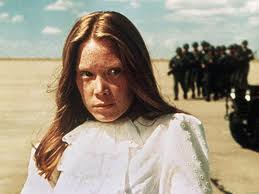 movie has an other-worldly feel to it, thanks to Sissy Spacek’s detached, child-like narration, and Malick’s use of Karl Orff’s children’s music. Spacek witnesses Sheen’s sudden, unexpected murder of her parents, and reacts as though the event was an episode of Ozzie and Harriet on television. They set fire to the house and hit the road, as we see Sissy’s life, in a series of close-
movie has an other-worldly feel to it, thanks to Sissy Spacek’s detached, child-like narration, and Malick’s use of Karl Orff’s children’s music. Spacek witnesses Sheen’s sudden, unexpected murder of her parents, and reacts as though the event was an episode of Ozzie and Harriet on television. They set fire to the house and hit the road, as we see Sissy’s life, in a series of close- ups of burning photographs and toys, go up in flames, scored to Orff’s rhythmic syncopation. Her detached narration becomes more bizarre with each of Sheen’s subsequent murders, as they kill their way through the Dakota badlands. Growing more and more paranoid, Sheen creates a hideout in the sagebrush, complete with deadly booby traps to deter their pursuers. Out of nowhere, a
ups of burning photographs and toys, go up in flames, scored to Orff’s rhythmic syncopation. Her detached narration becomes more bizarre with each of Sheen’s subsequent murders, as they kill their way through the Dakota badlands. Growing more and more paranoid, Sheen creates a hideout in the sagebrush, complete with deadly booby traps to deter their pursuers. Out of nowhere, a  Sheen/Spacek desert dance begins to Mickey and Sylvia’s “Love is Strange”, and ends just as abruptly as it began. Strange and deadly doings, out on the prairie.
Sheen/Spacek desert dance begins to Mickey and Sylvia’s “Love is Strange”, and ends just as abruptly as it began. Strange and deadly doings, out on the prairie.
http://www.youtube.com/watch?v=lcFx06cBmbk
Dogs of War 1980
John Irvin
“Cry havoc, and let slip the dogs of war” Shakespeare/Julius Caesar
My Favorite Frederick Forsyth book, and definitely a film worth  seeing. I have no idea why I like this film so much, but Christopher Walken’s both vulnerable, and dangerous persona, makes this thing work. Mercenaries are hired to depose a dictator in a fictional and failed African state. Forsyth’s elaborate detail, and great ensemble work keeps the action entertaining. Cast includes:
seeing. I have no idea why I like this film so much, but Christopher Walken’s both vulnerable, and dangerous persona, makes this thing work. Mercenaries are hired to depose a dictator in a fictional and failed African state. Forsyth’s elaborate detail, and great ensemble work keeps the action entertaining. Cast includes: 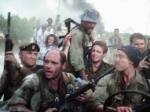 Tom Berenger, Paul Freeman, Jean Francois Stevenin, and JoBeth Williams.
Tom Berenger, Paul Freeman, Jean Francois Stevenin, and JoBeth Williams.
http://www.youtube.com/watch?v=Ji7-p2GMbWA
Hud 1963
Martin Ritt
(3 Oscars)
From Larry McMurty’s novel, Hud is Paul Newman’s cranky cowboy caper. A disappointment to his stalwart, principled father  (Melvyn Douglas), and a hero to his younger brother ( Brandon De Wilde), Hud’s just waiting for his Dad to die so he can inherit the ranch. Patricia Neal is hired to help with the chores, creating some lust amongst the longhorns. And have a listen to Elmer Bernstein’s subtly effective score –
(Melvyn Douglas), and a hero to his younger brother ( Brandon De Wilde), Hud’s just waiting for his Dad to die so he can inherit the ranch. Patricia Neal is hired to help with the chores, creating some lust amongst the longhorns. And have a listen to Elmer Bernstein’s subtly effective score –  sometimes using just one guitar. Newman is one nasty cowpoke, but Douglas and Neal steal the show, and win their Oscars. A Best Cinematography Oscar also went to James Wong Howe for some beautiful work in Black and White.
sometimes using just one guitar. Newman is one nasty cowpoke, but Douglas and Neal steal the show, and win their Oscars. A Best Cinematography Oscar also went to James Wong Howe for some beautiful work in Black and White.
http://www.facebook.com/video/video.php?v=1052301477747
KLUTE
Alan Pakula 1971
(1 Oscar)
Klute was the first installment of what would become known as director Alan Pakula’s “Paranoia Trilogy”. The other two films are “The Parallax View” (1974) and “All the President’s Men” (1976). But, I think most people remember it for Jane Fonda’s once-in-a-lifetime performance (and her Oscar) as the jittery hooker with someone on her roof.
The film begins with the disappearance of Pennsylvania executive Tom Gruneman. The police reveal that an obscene letter was found in Gruneman’s office. It was addressed to a prostitute in New York City named Bree Daniels (Fonda), who had received several similar letters from Gruneman. Much to the surprise of the police, Peter Cable (Cioffi), an executive at Gruneman’s company, hires family friend John Klute (Sutherland) to investigate Gruneman’s disappearance.
Klute rents an apartment in the basement of Daniels’ building, taps her phone, and follows her as she turns tricks. Initially, Daniels appears to be liberated by the freedom of freelancing as a call girl. In visits with a psychiatrist throughout the film, however, she reveals that she feels empty inside and wants to quit. Klute asks Daniels to answer some of his questions, but she refuses. He approaches her again, revealing that he has been watching her. She assumes that he will turn her in if she does not cooperate, but does not recall Gruneman at all. She reveals that she was beaten by one of her ‘johns’ two years earlier, but after seeing a photo of Gruneman, she says she cannot say for sure one way or the other. She is only certain that the john “was serious” about the attack.
Daniels takes Klute to meet her former pimp, Frank Ligourin (Scheider). Ligourin reveals that one of his prostitutes passed off the abusive client to Bree and another woman named Arlyn Page  (Dorothy Tristan). The original prostitute committed suicide, and Page became a junkieand disappeared. Klute gives his surveillance tapes to Daniels, telling her he is finished with her part of the case. But, realizing that he cannot continue the investigation without her, he re-enlists her help to track down Page.
(Dorothy Tristan). The original prostitute committed suicide, and Page became a junkieand disappeared. Klute gives his surveillance tapes to Daniels, telling her he is finished with her part of the case. But, realizing that he cannot continue the investigation without her, he re-enlists her help to track down Page.
Klute is one of the great New York Location movies. Others that come to mind are “Serpico”, “The French Connection”, and “Three Days of the Condor”. From the very first credit, Michael Small’s tingly, eerie musical score sets the mood. Alan Pakula went for dark and gritty, shooting in tight locations where entire scenes were lit exclusively with ‘inkies’. The result is a feeling of intimacy that resonates throughout the film, amplifying a sense of impending danger.
Beyond Fonda’s astounding performance, Donald Southerland’s John Klute has a hound dog-like persistence. Roy Scheider does a creepy turn as Fonda’s pimp, and Charles Cioffi is effectively dangerous as the serial hooker-killer. But, it’s Vivian Nathan, as Fonda’s shrink, who steals the show.
The Prince of Darkness, Gordon Willis, shines here, creating luster in the shadows. Seemless editing by Carl Lerner, and Michael Small’s relentlessly eerie score make this memorable. Maybe you have to be a New Yorker to love this film, but I don’t think so. One of my all time favorites.
Best scenes: Fonda with her ‘trick’ in the hotel room – “Oh, my angel. My angel”. And Jane tells old Mr Goldfarb about her recent erotic adventure. “No, he was an older man, not unlike yourself. Young men can be so…..silly”.
http://www.youtube.com/watch?v=EbWNl5_JT7k
http://www.youtube.com/watch?v=9FgAW344s5w
Lost Horizon 1937
Frank Capra
(2 Oscars)
It was the mid Thirties, and the Faschisti were marching across an ever-darkening Europe. James Hilton’s novel described a better place, a place of peaceful solutions, and escape from the
jack boot – somewhere over the rainbow, or in this case over the Himalaya’s, was the secret valley of the Blue Moon, and at its center – Shangri La, where dreams came true and life was eternal, well almost. In my opinion, Lost Horizon is Frank Capra’s masterpiece, and a joy for anyone to see.
The director didn’t like the early dailies – something just wasn’t right in those snow scenes. And it dawned on Capra, that there was no steaming breath from the mouths of his actors. So he packed up and reshot in a gigantic meat freezer, somewhere in Brentwood.
Tragically, about fifteen minutes of the original negative has been lost. The producers of the now-available DVD offer two versions; one with the existing picture, and another (thank God) with the screenplay intact, and a black picture over the dialogue scenes where the original picture was lost. I found the latter to be preferable, hearing the entire script, for me anyway, was much more satisfying.
A delicious Fairy Tale beautifully delivered by Capra with: Ronald Coleman, Jane Wyatt, Edward Everett Horton, Thomas Mitchell, and Sam Jaffe as The High Lama. And, Dmitri Tiomkin’s luscious musical score.
http://www.tcm.com/mediaroom/index.jsp?cid=223909
http://www.tcm.com/mediaroom/index.jsp?cid=223908
Serpico 1973
Sidney Lumet
Officer Serpico’s best friend on the police force tells him, “Frankie, no one trusts a cop, don’t take money”. From Peter Mass’ book on  New York City’s police corruption, and the true story of the cop who went on record against it. It takes almost the entire film for Serpico to persuade New York’s political establishment to accept the evidence he’s been trying to give them all along – evidence that leads to the Knapp Commission hearings. Director Lumet is
New York City’s police corruption, and the true story of the cop who went on record against it. It takes almost the entire film for Serpico to persuade New York’s political establishment to accept the evidence he’s been trying to give them all along – evidence that leads to the Knapp Commission hearings. Director Lumet is
at home, shooting on location, in the city he knows so well, and the film looks it. Dark and luscious lensing by Arthur Ornitz, and strong ensemble work by an familiar cast, filled with Lumet’s favorite actors. But, in my opinion, the smartest decision Sidney Lumet made was hiring Mikis Theodorakis to do the musical score, music that seems to support every image, with lyrical simplicity. One of the all-time great New York location movies, with: Al Pacino as Officer Frank Serpico, surrounded by the Sidney Lumet repertory company.
http://www.youtube.com/watch?v=LtTRYnsDH8Q
Slapshot 1977
George Roy Hill
Oddly enough I never saw Slapshot in a movie theater. My buddy  Mal Worob had a tape of it in his Manhattan loft. This was even before VHS – it was probably a Betamax. Mal was the first person I knew who had copies of movies at home.
Mal Worob had a tape of it in his Manhattan loft. This was even before VHS – it was probably a Betamax. Mal was the first person I knew who had copies of movies at home.
Anyway, I can remember Paul Newman, in an interview saying, “We got more out of less on Slapshot that any movie I was involved in”.
Newman plays the Player/Coach of a failed minor league Hockey Team, that’s being sold behind his back. So, with nothing to lose,  he hires the Hanson brothers (real life hockey players), who are notoriously violent and dirty players, and the Chiefs go on a tear. Slapshot has the look of a film that was obviously fun for the actors involved, and it shows, the cast seemingly in on every gag. And that cast includes Newman, Lindsay Crouse, Strother Mortin, Michael Ontkean, and those effervescent Hanson brothers.
he hires the Hanson brothers (real life hockey players), who are notoriously violent and dirty players, and the Chiefs go on a tear. Slapshot has the look of a film that was obviously fun for the actors involved, and it shows, the cast seemingly in on every gag. And that cast includes Newman, Lindsay Crouse, Strother Mortin, Michael Ontkean, and those effervescent Hanson brothers.
Hilarious!
http://www.youtube.com/watch?v=vW67agGgWAM
The Professionals 1966
Richard Brooks
Another Seven Samurai spin-off, but this one’s got Lee Marvin, and Burt Lancaster, and Robert Ryan, and Woody Strode, and Jack 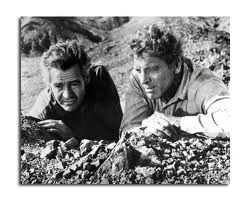 Palance and Claudia Cardinale, and some of the sauciest, machismo, cowpoke dialogue ever delivered. Richard Brooks’ crusty screenplay constantly parodies itself, and the boys are up to the task. Lee and Burt play tired adventurers, hired for one last mission – bring back the kidnapped wife of a wealthy railroad mogul. They had both fought in Mexico with
Palance and Claudia Cardinale, and some of the sauciest, machismo, cowpoke dialogue ever delivered. Richard Brooks’ crusty screenplay constantly parodies itself, and the boys are up to the task. Lee and Burt play tired adventurers, hired for one last mission – bring back the kidnapped wife of a wealthy railroad mogul. They had both fought in Mexico with
Pancho Villa, and are not eager to ride back south of the border but, what the hell, ten thousand dollars a man buys a lot of tamales. Every actor is given quotable dialogue to deliver, and deliver they do. This movie could have been just silly, but director, script, and cast come together here, and the result is a thoroughly entertaining film. Beautiful cinematography by Conrad Hall, and the musical score, by Maurice Jarre, is unexpectedly spicey. Grab this, if you can.
http://www.youtube.com/watch?v=iE7MSE0bDe8
The Thomas Crown Affair 1968
Norman Jewison
(1 Oscar)
No, not that silly sequel with Pierce Brosnan. I’m talking about the 1968 original with Steve McQueen and Faye Dunaway. A big  bank heist, simply for the thrill of it. A wealthy and bored McQueen robs the biggest bank in Boston, for fun. And insurance investigator Faye Dunaway is hired to crack the case. Of course, this is a movie, so they become romantically and competitively involved. She tells him she’s going to win, and get her man. He takes the challenge, and goes out and robs another bank, basically telling her, “I’m going to do it, and you can’t stop me, or catch me”.
bank heist, simply for the thrill of it. A wealthy and bored McQueen robs the biggest bank in Boston, for fun. And insurance investigator Faye Dunaway is hired to crack the case. Of course, this is a movie, so they become romantically and competitively involved. She tells him she’s going to win, and get her man. He takes the challenge, and goes out and robs another bank, basically telling her, “I’m going to do it, and you can’t stop me, or catch me”.
Sexy, slickly entertaining suds, with two stars in their prime. And, unlike the silly sequel, someone has to win, and someone has to
lose. The chase becomes a chess match, figuratively, and literally. Great use of split-screen, and Michel Legrand’s Oscar winning score, with a great song, “Windmills of your Mind” woven through it. Bank heists, Polo, Glider planes, and Chess for sex. Ah, the Sixties.
http://www.youtube.com/watch?v=hzajlo4ZJ0I
Three Day’s of the Condor 1975
Sidney Pollock
Is there a second CIA, inside the CIA? A question Turner (Robert 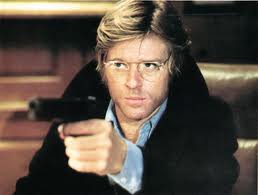 Redford), a bookish, reader/researcher who works for the CIA asks himself, after returning from lunch to find everyone in his New York office has been assassinated. The Agency thinks he’s involved, and unknown forces are out to silence him. He needs time to sort it all out, and somewhere to hide.
Redford), a bookish, reader/researcher who works for the CIA asks himself, after returning from lunch to find everyone in his New York office has been assassinated. The Agency thinks he’s involved, and unknown forces are out to silence him. He needs time to sort it all out, and somewhere to hide.  He kidnaps Faye Dunawaye, and uses her apartment – a place to think things through. Everyone is after him. Atwood (Addison Powell) whose secret network Turner accidently uncovered. Higgins (Cliff Robertson), the CIA’s Deputy Director who’s trying to bring him in. Wabash (John Houseman), a CIA Mandarin who orders him killed. Joubert (Max von Sydow) a hired assassin who befriends him. With the help of his kidnap victim Kathy (Faye Dunaway), he tries to solve the puzzle.
He kidnaps Faye Dunawaye, and uses her apartment – a place to think things through. Everyone is after him. Atwood (Addison Powell) whose secret network Turner accidently uncovered. Higgins (Cliff Robertson), the CIA’s Deputy Director who’s trying to bring him in. Wabash (John Houseman), a CIA Mandarin who orders him killed. Joubert (Max von Sydow) a hired assassin who befriends him. With the help of his kidnap victim Kathy (Faye Dunaway), he tries to solve the puzzle.
Condor is a fast paced, top notch CIA spy caper, with a clever, ever-twisting plot, and game cast. Pollock’s second best effort, I think. (Tootsie is hard to beat) Lorenzo Semple’s intelligent screenplay is smart and juicy. Slick cinematography by Owen Roizman, with good use of New York locales. Great stuff.
http://www.youtube.com/watch?v=PBZf7vifXmY
*
© 2011 Shaun Costello
I WISH I’D SAID THAT

I WISH I’D SAID THAT
By Shaun Costello
I’ve always envied those few whose witty weaponry enabled them to defuse an impossible moment with the turn of a phrase.
Sherwood Anderson when reviewing cowboy hero Tom Mix: “They say he rides as if he’s part of the horse, but they didn’t say which part.”
Dorothy Parker: “That woman speaks eighteen languages and can’t say ‘no’ in any of them.”
George S Kaufman: Once asked by a press agent, “How do I get my leading lady’s name into your newspaper?” Kaufman replied, “Shoot her.”
I wish I’d said that, but of course no one asked me. Of all the great verbal kick-turns I’ve read, my favorite happened at a Beverly Hills dinner party back in 1940.
Arthur Hornblow Jr. was one of Hollywood’s most successful producers. From 1933 to 1942 he had a hand in the production of some of Paramount’s 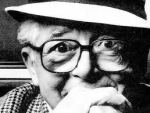 biggest hits, before moving on to a stellar career at MGM, producing for luminaries like George Cukor and Billy Wilder. Hornblow’s fame as a producer was equaled however, by his legendary reputation as a party host. His dinner parties were storied events, and making his guest list meant you had “arrived” in the motion picture community.
biggest hits, before moving on to a stellar career at MGM, producing for luminaries like George Cukor and Billy Wilder. Hornblow’s fame as a producer was equaled however, by his legendary reputation as a party host. His dinner parties were storied events, and making his guest list meant you had “arrived” in the motion picture community.
The massive dining table was set according to the measurements and procedures followed by the staff of the Royal Family for state dinners at Windsor Castle. Each dinner guest was provided with their own personal
servant, who stood at attention behind each chair awaiting the call to the most menial of tasks. The wines served were of the great vintages from the finest Chateau’s of Bordeaux and Burgundy. The guest list read like the who’s who of Hollywood Royalty: Clark Gable, Carole Lombard, Robert  Taylor, Claire Trevor, Spencer Tracy, Kate Hepburn, Jimmy Stewart, Bing Crosby, Olivia DeHaviland, Bob
Taylor, Claire Trevor, Spencer Tracy, Kate Hepburn, Jimmy Stewart, Bing Crosby, Olivia DeHaviland, Bob  Hope, Cary Grant. All dressed to the “Nines”. At their peak. Walking on air.
Hope, Cary Grant. All dressed to the “Nines”. At their peak. Walking on air.
On this particular evening the name of Herman Mankiewicz had been added to the guest list. Manky, as he was universally known, was one of Hollywood’s mercurial talents, responsible for the screenplays for Citizen Kane, The Enchanted Cottage,
Dinner at Eight, and many others. He was also one of Hollywood’s most notorious drunks, leaving a disgruntled and embarrassed list of dinner hosts in his wake. Arthur Hornblow Jr. had avoided inviting Manky to one of his  extravaganzas, fearing bad behavior, and the
extravaganzas, fearing bad behavior, and the 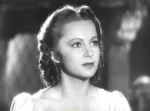 possibility of an unfortunate incident. But Manky, whose barbed wit and scintillating conversation made him popular on Tinseltown’s party circuit, could not be put off forever. So on this particular evening a nervous Arthur Hornblow Jr. could do nothing more than hope for good behavior from his mercurial guest. He gave strict instructions to the staff to limit Manky’s wine service at dinner and to watch for signs of unusual behavior. That done, Hornblow continued fussing over details he felt necessary in order to present a fabulous evening to his fabulous guests.
possibility of an unfortunate incident. But Manky, whose barbed wit and scintillating conversation made him popular on Tinseltown’s party circuit, could not be put off forever. So on this particular evening a nervous Arthur Hornblow Jr. could do nothing more than hope for good behavior from his mercurial guest. He gave strict instructions to the staff to limit Manky’s wine service at dinner and to watch for signs of unusual behavior. That done, Hornblow continued fussing over details he felt necessary in order to present a fabulous evening to his fabulous guests.
The pre-dinner cocktail reception out on the terrace was accompanied by a string quartet, while Hollywood’s finest chattered amongst themselves, totally oblivious to possibility of the existence of anything unglamorous in or out of their own perfect little world. Manky held court with a raconteur’s glib concoction of facts and fables, and his audience loved every moment. Hornblow gazed at the assembly through the window and smiled.
The crystal bell tinkled the announcement of a dinner at the ready, and the guest list with the grace born of celebrity and assurance glided through the huge doorway into the dining chamber, the epicenter of Hornblow’s mansion. Everyone found their appropriate places with Hornblow at the  head of the enormous table, and his wife Myrna Loy sitting opposite. The wines were greeted with ooohs and ahhhs, and each course served was a tour de force in epicurean perfection. Arthur Hornblow Jr, surveyed his table with a sense of satisfaction thinking to himself. “Well Arthur, you’ve done it again. Everything is as it should be.”
head of the enormous table, and his wife Myrna Loy sitting opposite. The wines were greeted with ooohs and ahhhs, and each course served was a tour de force in epicurean perfection. Arthur Hornblow Jr, surveyed his table with a sense of satisfaction thinking to himself. “Well Arthur, you’ve done it again. Everything is as it should be.”
Gone unnoticed amidst all this perfection was an unusually quiet Herman Mankiewicz. Although his wine flow had been curtailed at the dinner table, he had consumed seven or eight martinis during the pre dinner festivities and was plastered. He sat staring straight ahead, weaving ever so slightly to his left and then his right, then slightly forward and suddenly vomited into his soup.
What followed was the longest pause in the history of Tinseltown. No one moved. No one made eye contact with anyone else. Fifty dinner guests sat silent and motionless, perhaps hoping on the off chance, that God might appear and, in his benevolence somehow make things right. But God went unneeded on this particular evening. Manky, seemingly recovered from his trance-like stupor looked down at the evidence of his mischief, then slowly lifted his head and turned in the direction of his horrified host and said, “Not to worry Arthur. The white wine came up with the fish.”
I wish I’d said that. I wish I’d been there.
*
© 2006 Shaun Costello/New York Times Sunday Magazine
TOADY TOBACK’S HASTY EXIT

I think Jimmy Toback sucks, and so should you.
By Shaun Costello
Every once in a great while, an opportunity presents itself to right a great wrong, to set the record straight, to win one for the Gipper. Permit me to give you an example of how I obnoxiously and joyfully behaved when I got the worst of all film directors accidentally in my cross hairs. Some time in 1983, I paid seven dollars to see, arguably, the worst film ever made. It was “Exposed”, starring Nastassia Kinsky (she of the snake pic) and Rudolph Nureyev (I’m not making this up). Anyway, about half way through this excruciatingly putrid film, and just before I walked out of the  theater, Nureyev, who plays a violinist, approaches Nasty Kinsky from behind and, while fingering her face like frets on a fiddle, he begins to run his bow across her bare breasts, as she moans in ecstasy, “Oh yes, play me, play me”.
theater, Nureyev, who plays a violinist, approaches Nasty Kinsky from behind and, while fingering her face like frets on a fiddle, he begins to run his bow across her bare breasts, as she moans in ecstasy, “Oh yes, play me, play me”.
Well, that was just about my limit, and I swore to myself that if I ever ran across that talentless, gambling addicted, over-achiever Jimmy Toback, who directed this piece of drek, that vengeance would be mine.
OK, fast forward to about 1988. I’m sitting with a few friends watching a movie; I don’t remember which one, at the Ziegfeld Theater, which was then Manhattan’s best film venue. After the tail credits, the house lights come up and, as we’re putting on our coats, one of my friends say’s, “Hey, isn’t that Jimmy Toback?” It was one of those Marlon Brando diamond bullet in the forehead moments that come all too infrequently in a man’s life, but I was up to it. At just about the top of my lungs, I screamed across the crowded theater, “Hey Toback, I sat through half an hour of EXPOSED, and you owe me seven bucks, now pay up!” Toback, slime that he was (and I’m sure still is), bolted, running for one of the side doors of the theater, leaving behind the girl he was with. What a toad. Anyway, I’m sure everyone within earshot thought I was nuts, but I felt like a million bucks. Vengeance was finally mine, and the cowardly behavior of Toback just about made my year. The moral of this tale, if there is one, is the next time opportunity knocks – open the door.
http://www.youtube.com/watch?v=EHq6B_EMhks
*
© 2007 Shaun Costello
HOLLYWOOD’S BEST

Hollywood’s Best
The ten best American films I can think of that
were produced by Hollywood’s studio system.
A moment here, to talk about criteria. My selection process was based on those films, whose existence depended on the creative conveyor belt of Hollywood’s film factories, that began with the Silents of the Twenties, and peaked with the well organized, and marvelous output of the Thirties and Forties. The major studios were run by hard nosed businessmen with names like Mayer, and Zanuck, and Warner, and Cohn; whose methods for getting a product to market varied little from their cousins back East, in New York’s Garment Center. Everyone who worked in movies back then was under contract; writers, directors, producers, scenic artists, technicians, and of course, movie stars. The production schedules were tight, and the objective was to get the maximum amount of product to the marketplace, with the minimum amount of time and cost. Scratch a Movie Mogul, and find a Garmento? Sure, why not – the system worked. And, every so often, the right elements fell into place, usually by happenstance, and resulted in memorable motion pictures. The appropriate writer for the script, the right actor for the part, a crew that knew its business, a savvy producer to crack a whip, and the right director, with the vision and stamina to see the project through. And the result was the everlasting language of movies, woven forever into the fabric of the American syllabus. Those lines that live forever: “Of all the gin joints, in all the world”………. “Pay no attention to that man behind the curtain”……….. “Take ‘em to Missouri, Matt”………. “Leave the gun. Take the cannoli’s”………… “I’m on toppa the world, Ma”………. “Frankly my dear, I don’t give a damn”………… “Badges? We don’ need no stinkin’ badges”……….“I coulda been a contender. I coulda been somebody”. American films, produced through the Hollywood Studio System.
I struggled with this, and many of you will find fault with my choices but, for better or worse, here they are:
Red River 1948
Howard Hawks
As American as it gets. Hawks’ memorable tapestry of the blazing of the Chisholm Trail. The cattle were in Texas, but the Rail Head was in Abilene Kansas. And driving a huge and ornery herd of  cattle, for the very first time, across the Red River, over mountain ranges, through hostile Indian territory, risking misadventure with nature and bands of rustlers, was no easy business.
cattle, for the very first time, across the Red River, over mountain ranges, through hostile Indian territory, risking misadventure with nature and bands of rustlers, was no easy business.
Hawks, probably Hollywood’s best dialogue director, made John 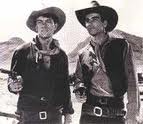 Wayne almost believable. Lots of crusty, spicy cowpoke dialogue, that might be corny in the hands of another director, but Hawks pulls it off.
Wayne almost believable. Lots of crusty, spicy cowpoke dialogue, that might be corny in the hands of another director, but Hawks pulls it off.
It’s dawn on the range, and the men and the cattle are ready. Hawks’ camera does a slow, minute-long, 360 pan across the faces of cowboy after cowboy, beginning and ending on Wayne, who looks to Montgomery Clift and finally say’s, “Take ‘em to Missouri, Matt”. Clift raises his hat  and whoops the first of many, and the next cowboy does the same, and in quick cuts now, face after face, whoop after whoop, until, finally driven by the drama of the moment, the music swells, and the herd begins to move. It’s one of the great moments in movie history and, if you haven’t experienced it – shame on you.
and whoops the first of many, and the next cowboy does the same, and in quick cuts now, face after face, whoop after whoop, until, finally driven by the drama of the moment, the music swells, and the herd begins to move. It’s one of the great moments in movie history and, if you haven’t experienced it – shame on you.
http://movieclips.com/S47B-red-river-movie-showdown/
The Treasure of the Sierra Madre 1948
John Huston
(3 Oscars)
Greed and paranoia in the Mexican Mountains. Huston’s masterpiece, and an Oscar for his Dad. Huston wrote the part for  his father, Walter, to play. What gold does to men’s lives. Howard (Houston) foretells of the possibilities of sudden wealth turning men against each other, but Dobbs (Bogart) say’s not him. He’d take only what he needed, and not a bit more. And of course,
his father, Walter, to play. What gold does to men’s lives. Howard (Houston) foretells of the possibilities of sudden wealth turning men against each other, but Dobbs (Bogart) say’s not him. He’d take only what he needed, and not a bit more. And of course,  it’s Dobbs who turns rotten.
it’s Dobbs who turns rotten.
Absolutely perfect from beginning to end, and as good as movies get
http://www.youtube.com/watch?v=vGpvO8JabEc
The Best Years of Our Lives 1946
William Wyler
(7 Oscars)
The War over, three men meet on the transport plane taking them home to Boone City. A middle-aged Army Sargeant (Fredric  March), a decorated Flyboy (Dana Andrews), and a Sailor with hooks for hands (Harold Russell – a real-life vet amputee, who gives a startlingly believable performance). This film was shot in the time which it depicts, and the language, which might seem corny
March), a decorated Flyboy (Dana Andrews), and a Sailor with hooks for hands (Harold Russell – a real-life vet amputee, who gives a startlingly believable performance). This film was shot in the time which it depicts, and the language, which might seem corny  and dated now, is how people spoke back then. The right cast, particularly March and Myrna Loy, the right story, and a savvy director turn this into one of the real champs. Best moment: Dana Andrews in the bomber shell.
and dated now, is how people spoke back then. The right cast, particularly March and Myrna Loy, the right story, and a savvy director turn this into one of the real champs. Best moment: Dana Andrews in the bomber shell.
http://www.youtube.com/watch?v=h3EsNKlB7os
On the Waterfront 1954
Elia Kazan
(8 Oscars)
So, you have to ask yourself, “Were there really commies in  Hollywood, after WWII, and what message were they sending?” Here, Director Elia Kazan, ever embittered by the McCarthy-driven witch hunt that victimized him, certainly serves up a leftist theme, but who cares. Scorching drama, delivered by Brando’s ex pug, Malden’s stalwart Priest, and Cobb’s gangster brother, all delivering Budd Schulberg’s
Hollywood, after WWII, and what message were they sending?” Here, Director Elia Kazan, ever embittered by the McCarthy-driven witch hunt that victimized him, certainly serves up a leftist theme, but who cares. Scorching drama, delivered by Brando’s ex pug, Malden’s stalwart Priest, and Cobb’s gangster brother, all delivering Budd Schulberg’s  crisp, believable dialogue make this one memorable. Also great ensemble work by Kazan’s bit players, some of whom were ex prize fighters and looked it. Overlooked often, is Leonard Bernstein’s simple and haunting score, and Boris Kaufman’s all-to-real, black and white cinematography. If you’ve seen it, see it again. If you haven’t, what are you waiting for?
crisp, believable dialogue make this one memorable. Also great ensemble work by Kazan’s bit players, some of whom were ex prize fighters and looked it. Overlooked often, is Leonard Bernstein’s simple and haunting score, and Boris Kaufman’s all-to-real, black and white cinematography. If you’ve seen it, see it again. If you haven’t, what are you waiting for?
http://www.traileraddict.com/trailer/on-the-waterfront/trailer
Citizen Kane 1941
Orson Welles
(1 Oscar)
The one and only. Movies would never be the same again. The story goes, that it was Nelson Rockefeller (Just who did you think  the ‘R” in RKO was, anyway?), who heard the Mercury Theater of the Air’s now-infamous radio broadcast of War of the Worlds, and called the Studio to suggest bringing this young radio guy, Welles, out to Hollywood for a look. So, Welles’ Mercury Theater of the Air troupe moved out to Los Angeles, and the rest is history.
the ‘R” in RKO was, anyway?), who heard the Mercury Theater of the Air’s now-infamous radio broadcast of War of the Worlds, and called the Studio to suggest bringing this young radio guy, Welles, out to Hollywood for a look. So, Welles’ Mercury Theater of the Air troupe moved out to Los Angeles, and the rest is history.
 “Rosebud” – what was it, anyway. From the opening Newsreel, to the screening room scene, to a life revealed, every moment dazzles. Innovations, one after the other – from Greg Toland’s mesmerizing lens, to the rapid fire editing, to Welles’ brilliant direction, to the debut of all those newbie’s from radio – it was all so new and fresh. The screenplay, by Welles and Herman Mankiewicz, has two camps; critic Pauline Kael whose
“Rosebud” – what was it, anyway. From the opening Newsreel, to the screening room scene, to a life revealed, every moment dazzles. Innovations, one after the other – from Greg Toland’s mesmerizing lens, to the rapid fire editing, to Welles’ brilliant direction, to the debut of all those newbie’s from radio – it was all so new and fresh. The screenplay, by Welles and Herman Mankiewicz, has two camps; critic Pauline Kael whose 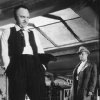 expository essay “Raising Kane”, suggests Manky to be the prime mover, with Welles making additions here and there. Peter Bogdanovich, whose response to Kael was his own essay, “Kane Mutiny”, published in Esquire, refuted Kael’s claims. Years later, it was revealed that Bogdanovich’s piece was actually penned by Welles. Who cares, really? The film’s the thing, and there’s just nothing like it.
expository essay “Raising Kane”, suggests Manky to be the prime mover, with Welles making additions here and there. Peter Bogdanovich, whose response to Kael was his own essay, “Kane Mutiny”, published in Esquire, refuted Kael’s claims. Years later, it was revealed that Bogdanovich’s piece was actually penned by Welles. Who cares, really? The film’s the thing, and there’s just nothing like it.
http://www.youtube.com/watch?v=zyv19bg0scg
The Wizard of Oz 1939
Victor Fleming
(2 Oscars)
Well, because! Because of the wonderful things he does. I wanted to include a musical, and no other Hollywood Musical matches  Dorothy’s magical tornado-assisted journey from Kansas to Oz, and back again. Nothing even comes close. It’s as fresh and appealing to children today, as it was when it first opened seventy years ago. Seventy years – hard to imagine. Garland, and Bolger, and Lahr, and Haley, and Frank Morgan’s Wizard, and Magaret Hamilton’s Wicked Witchiness, and Billie Burke’s Glinda. And all those Munchkins, who live
Dorothy’s magical tornado-assisted journey from Kansas to Oz, and back again. Nothing even comes close. It’s as fresh and appealing to children today, as it was when it first opened seventy years ago. Seventy years – hard to imagine. Garland, and Bolger, and Lahr, and Haley, and Frank Morgan’s Wizard, and Magaret Hamilton’s Wicked Witchiness, and Billie Burke’s Glinda. And all those Munchkins, who live 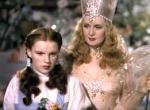 Somewhere, Over the Rainbow. It’s just all so perfect, and it made the world a better place.
Somewhere, Over the Rainbow. It’s just all so perfect, and it made the world a better place.
http://www.traileraddict.com/trailer/the-wizard-of-oz/trailer
Nashville 1975
Robert Altman
(1 Oscar)
I’ll bet I surprised you with this one. Altman’s scathingly hilarious take on Country Music, and the shrine it lives in. The  word got out, Robert Altman was on location shooting some kind of musical, and he was letting the cast members write their own songs. Well, that’s about all it took for actors from Altman’s older films to start showing up on the set. And Altman wrote them in, playing themselves, and they improvised their scenes with other cast members. Julie
word got out, Robert Altman was on location shooting some kind of musical, and he was letting the cast members write their own songs. Well, that’s about all it took for actors from Altman’s older films to start showing up on the set. And Altman wrote them in, playing themselves, and they improvised their scenes with other cast members. Julie  Christie and Elliot Gould were among them. It was a chaotically joyful atmosphere.
Christie and Elliot Gould were among them. It was a chaotically joyful atmosphere.
OK, during a political campaign in the city of Nashville, the story drifts lazily through the lives of several of its citizens – some musicians, some wannabe’s, and some just plain folks. The vignettes are so absorbing, and the music so great, that it doesn’t seem to matter that the movie seems to have no central theme – but it does. Incredible performances by an insane Barbara Harris, and far too many actors to name. Just about the time when you begin wondering  what this thing is all about (we’re now almost two hours into it with no apparent story in sight), all of the characters converge at the site of a political rally. And then it happens – someone we’ve known all along, unexpectedly pulls out a gun and starts shooting. And cast members start falling. And in the midst of chaos, the craziest member in the cast, Barbara Harris, a wannabe lounge singer with no voice, picks up the microphone and begins to sing, somehow calming the terrified onlookers. Nashville Is an eyeful and an earful, but most of all, it’s joyfully entertaining.
what this thing is all about (we’re now almost two hours into it with no apparent story in sight), all of the characters converge at the site of a political rally. And then it happens – someone we’ve known all along, unexpectedly pulls out a gun and starts shooting. And cast members start falling. And in the midst of chaos, the craziest member in the cast, Barbara Harris, a wannabe lounge singer with no voice, picks up the microphone and begins to sing, somehow calming the terrified onlookers. Nashville Is an eyeful and an earful, but most of all, it’s joyfully entertaining.
http://www.youtube.com/watch?v=9SeotkeSfp8
Network 1976
Sidney Lumet
(4 Oscars)
“I’m mad as hell, and I ‘m not going to take it any more”. So say’s  Howard Beale, former Mandarin of television, and currently the madman of the airwaves. Lumet’s crafty direction, pretty much letting his cast do their thing, comes in second here, to what may be the greatest screenplay ever written. Paddy Chayevsky’s brilliantly prophetic script foresaw the future of television. In
Howard Beale, former Mandarin of television, and currently the madman of the airwaves. Lumet’s crafty direction, pretty much letting his cast do their thing, comes in second here, to what may be the greatest screenplay ever written. Paddy Chayevsky’s brilliantly prophetic script foresaw the future of television. In  painting a picture of a television network gone mad, he basically created Fox News, long before Rupert Murdoch ever wrote the check. A sexy cast, including William Holden, Faye Dunaway, Peter Finch, Robert Duvall, and Ned Beatty in a scene you’ll never forget.
painting a picture of a television network gone mad, he basically created Fox News, long before Rupert Murdoch ever wrote the check. A sexy cast, including William Holden, Faye Dunaway, Peter Finch, Robert Duvall, and Ned Beatty in a scene you’ll never forget.
http://www.youtube.com/watch?v=CeCMSLP3Wy8
The Godfather 1972
Francis Ford Coppola
(3 Oscars)
The Godfather Part Two
Francis Ford Coppola
(6 Oscars)
Ok, I know I’m cheating here, but I’m going to combine them as  one movie. I didn’t want the Godfather Saga taking up twenty percent of the list. Find forgiveness in your heart. Vito Corleone’s clan seems to take up more than its share of space in the American psyche. Part Two may be an even better movie than its predecessor. From Clemenza’s “Leave the gun, Take the cannoli’s”, to Hyman Roth’s “Michael,
one movie. I didn’t want the Godfather Saga taking up twenty percent of the list. Find forgiveness in your heart. Vito Corleone’s clan seems to take up more than its share of space in the American psyche. Part Two may be an even better movie than its predecessor. From Clemenza’s “Leave the gun, Take the cannoli’s”, to Hyman Roth’s “Michael,  we’re bigger than US Steel”, it’s a marvelous narrative of two generations of a Mafia crime family. Really, picture perfect in every way. Coppola’s all-seeing eye seems everywhere, in every detail, no matter how small. He brought the A-Team to this one, from Gordon Willis’ dark images to Nino Rota’s music. Splendid!
we’re bigger than US Steel”, it’s a marvelous narrative of two generations of a Mafia crime family. Really, picture perfect in every way. Coppola’s all-seeing eye seems everywhere, in every detail, no matter how small. He brought the A-Team to this one, from Gordon Willis’ dark images to Nino Rota’s music. Splendid!
http://www.youtube.com/watch?v=bf16Vc3iZjE
http://www.youtube.com/watch?v=DLMg25_-EXk
http://www.youtube.com/watch?v=qJr92K_hKl0
Casablanca 1942
Michael Curtiz
You must remember this. Hollywood’s greatest accident, and maybe the all-time most perfect script. Just a production number  on Jack Warner’s long list of propaganda projects for Washington, but somehow, everything fell into place. Bogart and Bergman, who seldom spoke to each other off-camera, and never struck up a friendship, came off as perhaps the most romantic couple in the history of movies. Warner’s stock company filled out the cast perfectly, and that song – As Time Goes By. Assigned to write the screenplay, totally by happenstance, were those happy go lucky Epstein twins, Julius
on Jack Warner’s long list of propaganda projects for Washington, but somehow, everything fell into place. Bogart and Bergman, who seldom spoke to each other off-camera, and never struck up a friendship, came off as perhaps the most romantic couple in the history of movies. Warner’s stock company filled out the cast perfectly, and that song – As Time Goes By. Assigned to write the screenplay, totally by happenstance, were those happy go lucky Epstein twins, Julius  and Philip, who would pen perfection, much to their own surprise. From top to bottom, no one had any idea that this little propaganda vehicle would wind up to be one of Hollywood’s greatest classics.
and Philip, who would pen perfection, much to their own surprise. From top to bottom, no one had any idea that this little propaganda vehicle would wind up to be one of Hollywood’s greatest classics.
But there was a problem. The edited film made no sense. Jack Warner hated it, and said it was unfixable. Editor Owen Marks sat there with Director Michael Curtiz trying every trick he could think of. It was the ending. Bogart sends Bergman off with Henreid to the waiting plane. Major Strasser shows up and is shot by Claude Raines, much to Bogey’s surprise. But it doesn’t seem to make any sense. Warner drags the Epstein boys off their tennis court and orders them into the editing room. When they see the ending they’re stunned. “What have you done to our script?”, they ask Curtiz and Marks. Julius Epstein tells Marks to reverse the order of two close-up reaction takes during the end of the scene. Voila, a classic is born. And the Epsteins return to their tennis game. The Fundamental things apply, as time goes by.
http://www.youtube.com/watch?v=INBmVxAsdFE
*
© 2011 Shaun Costello


















